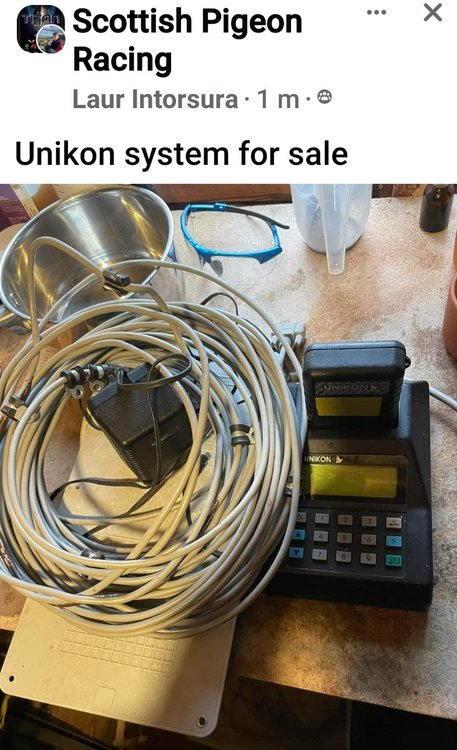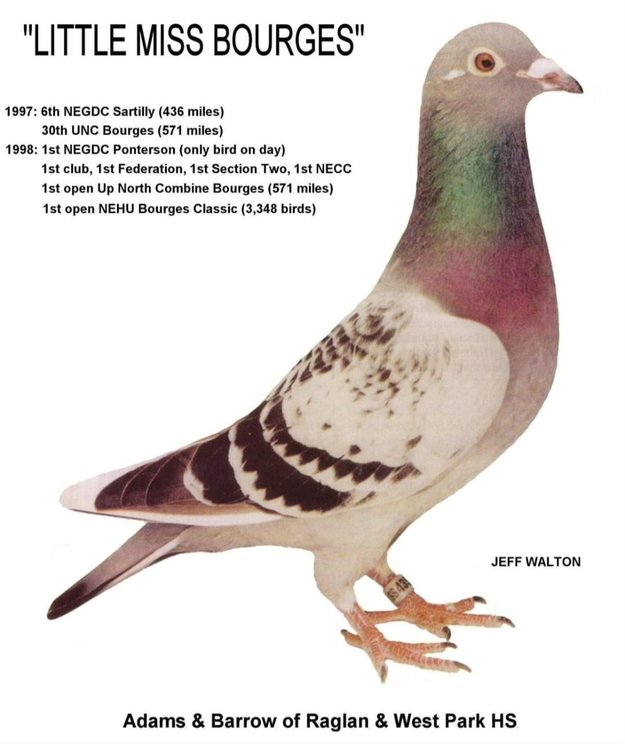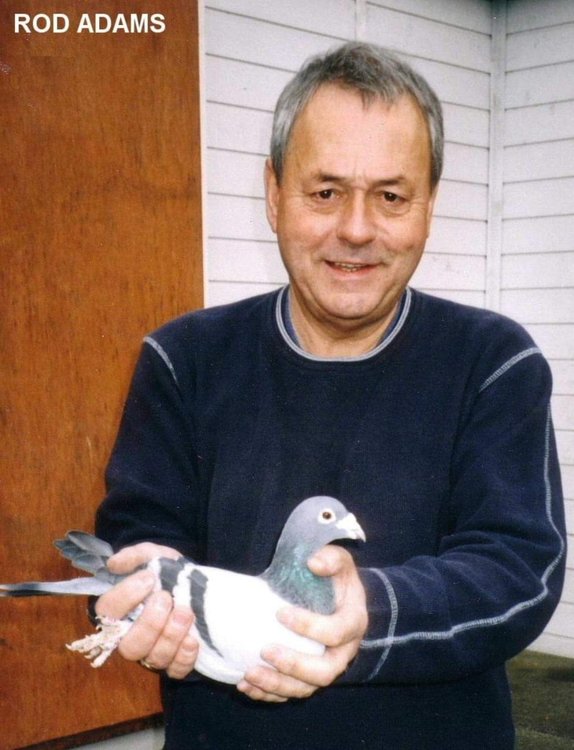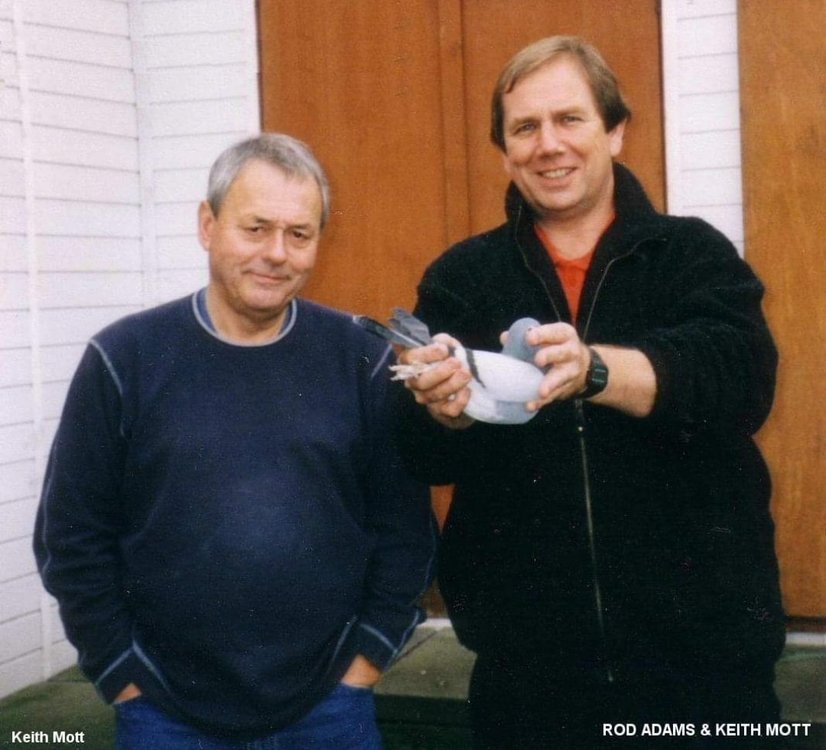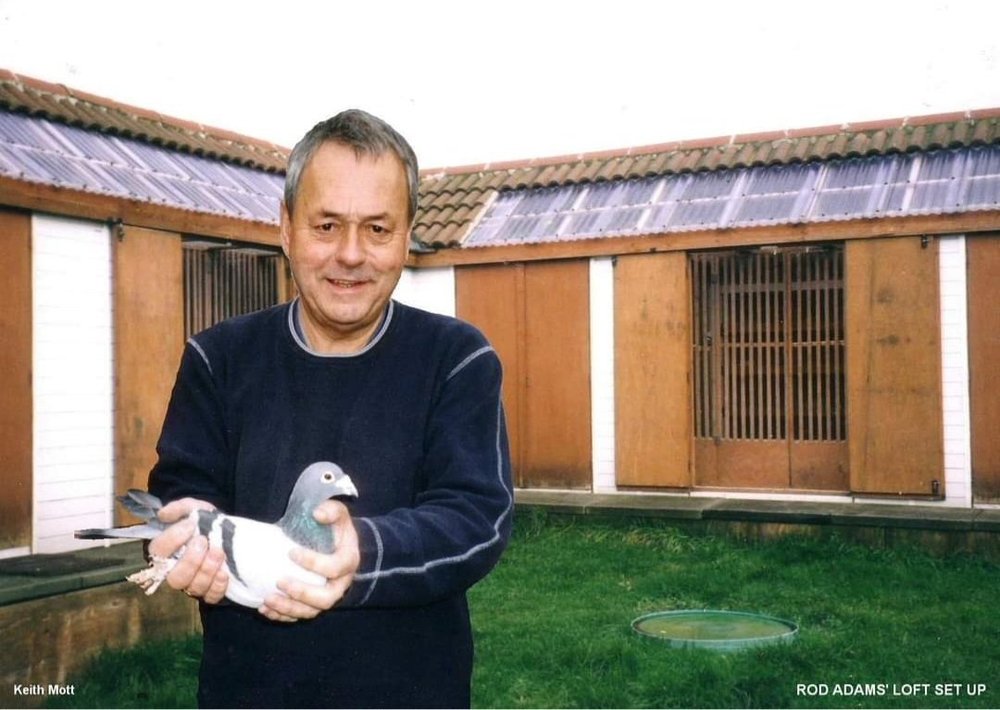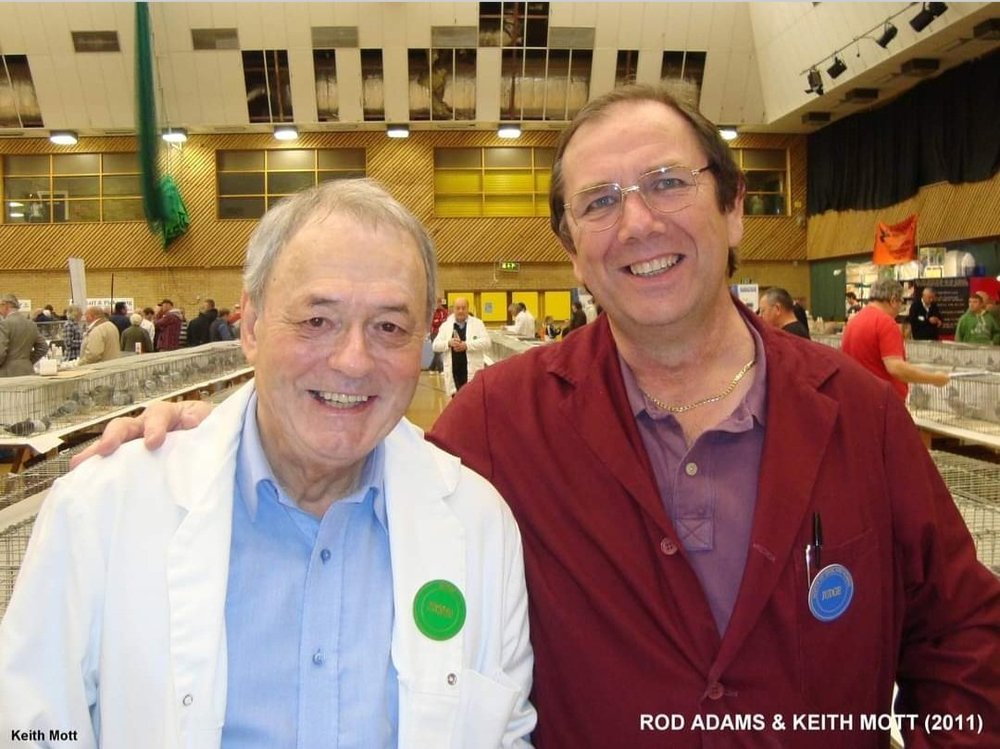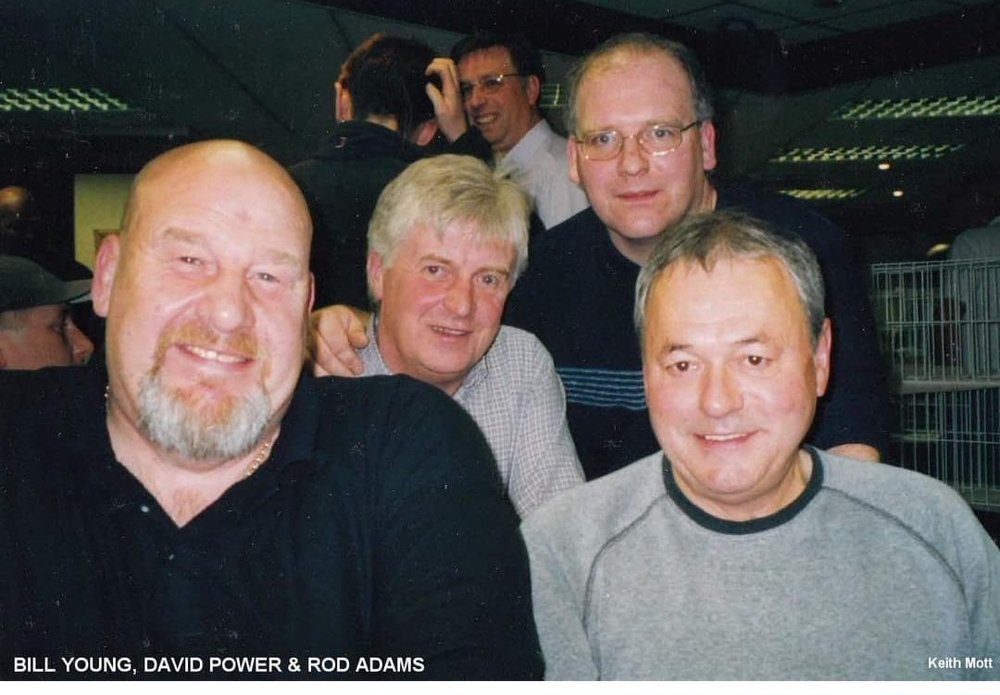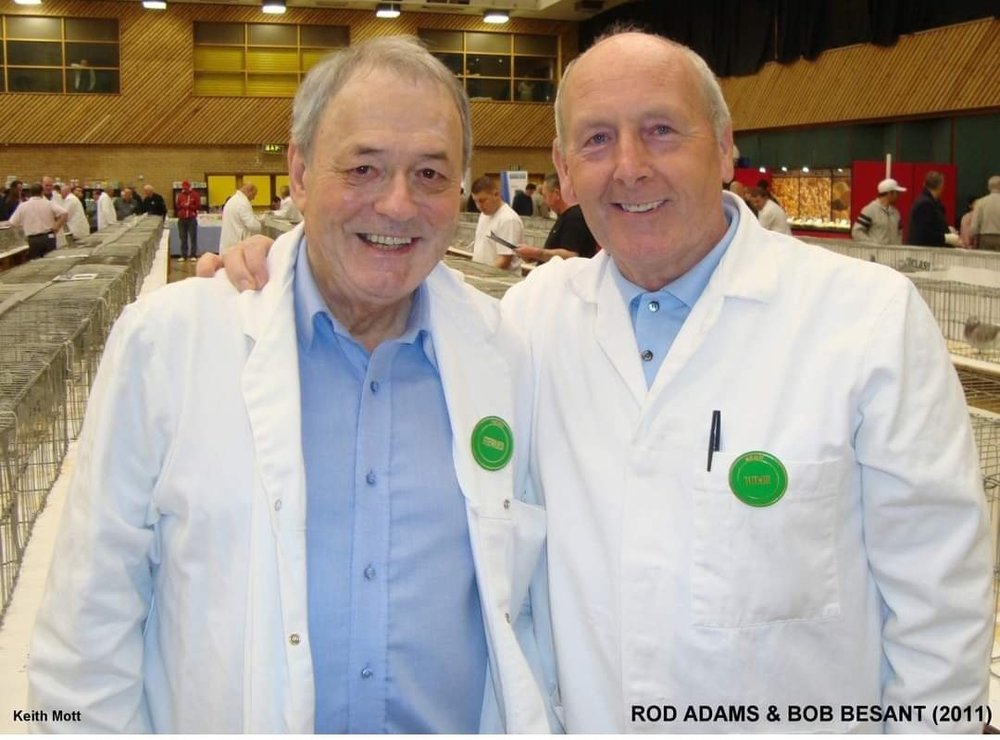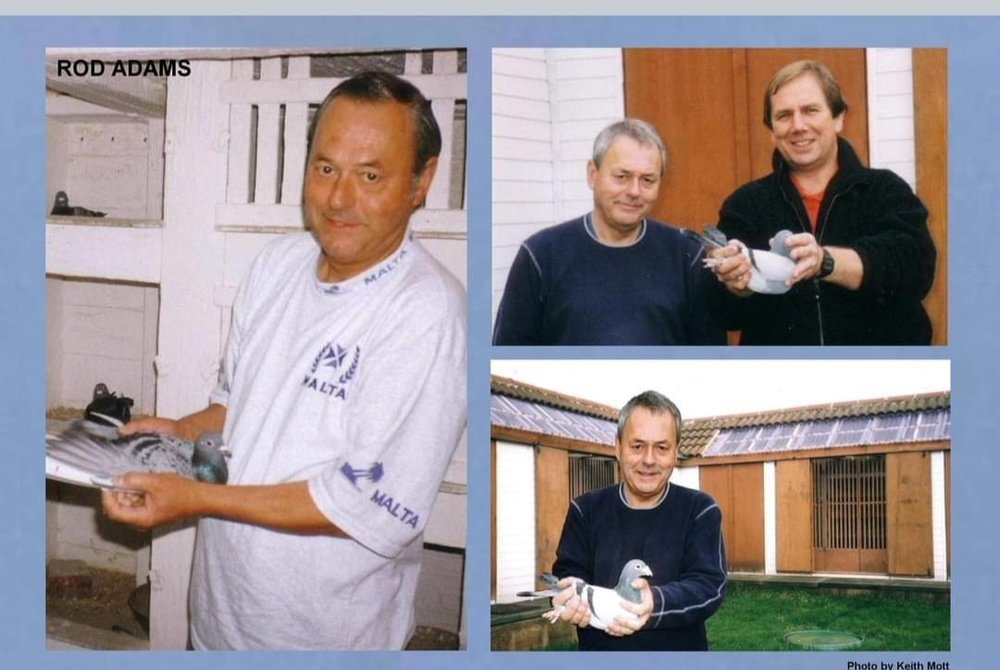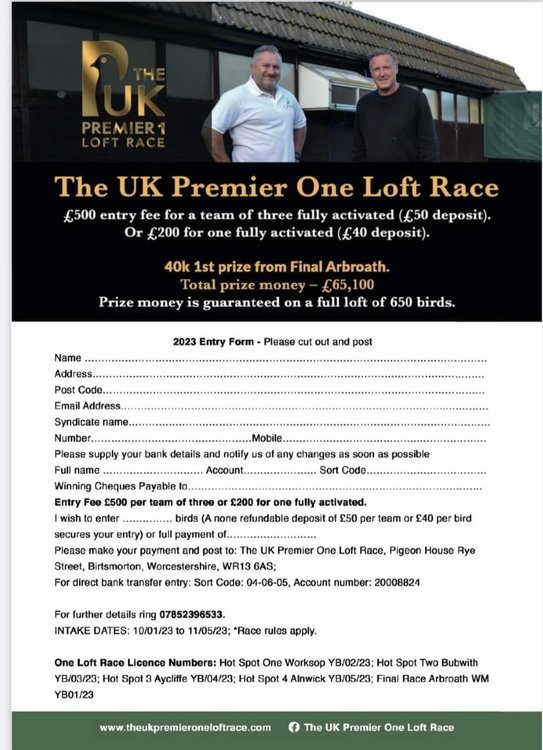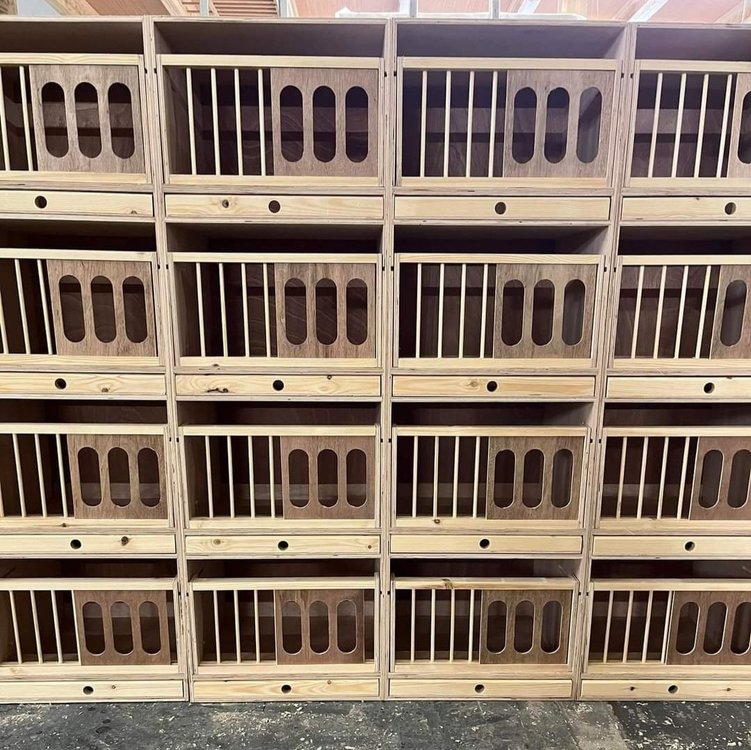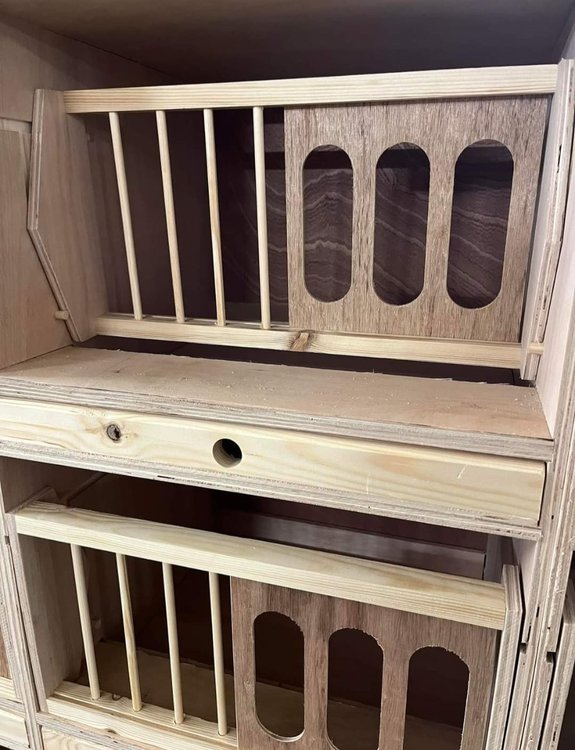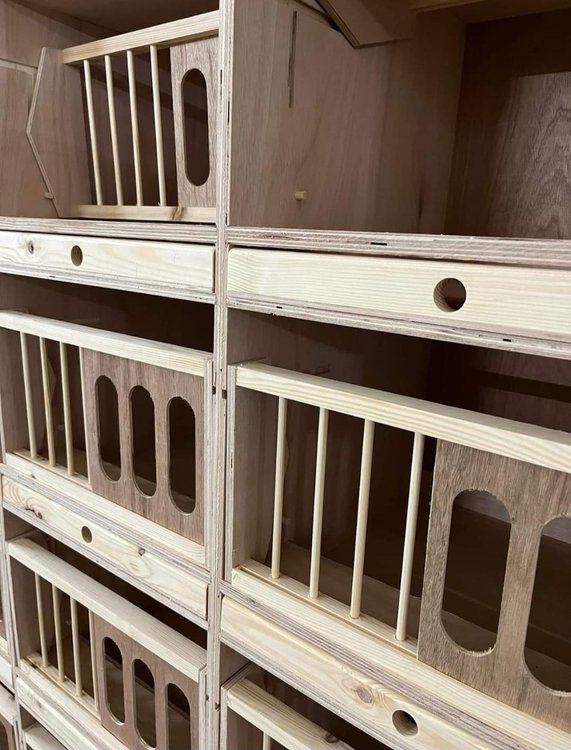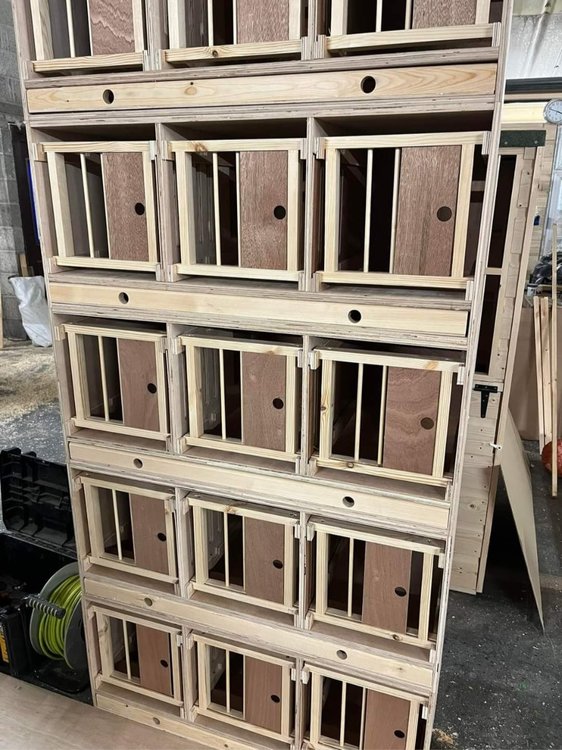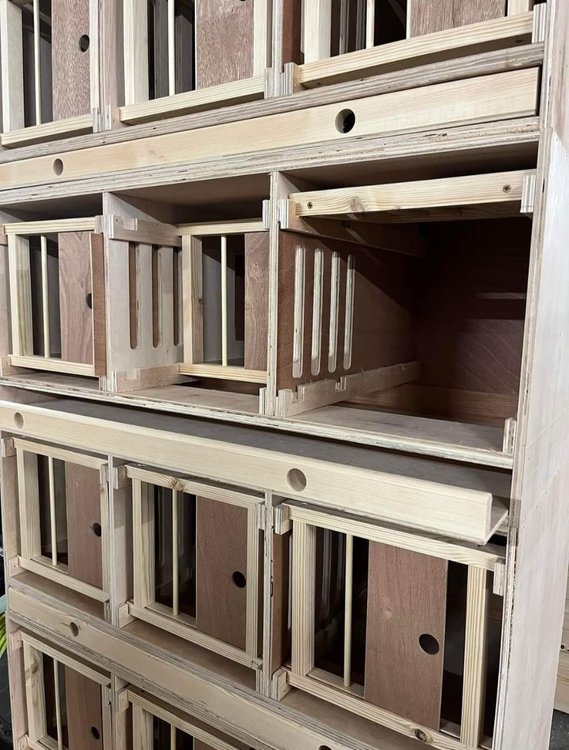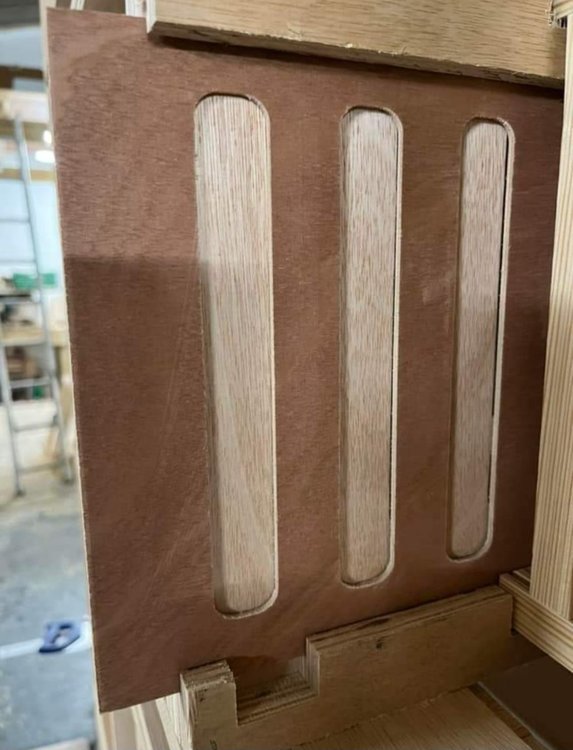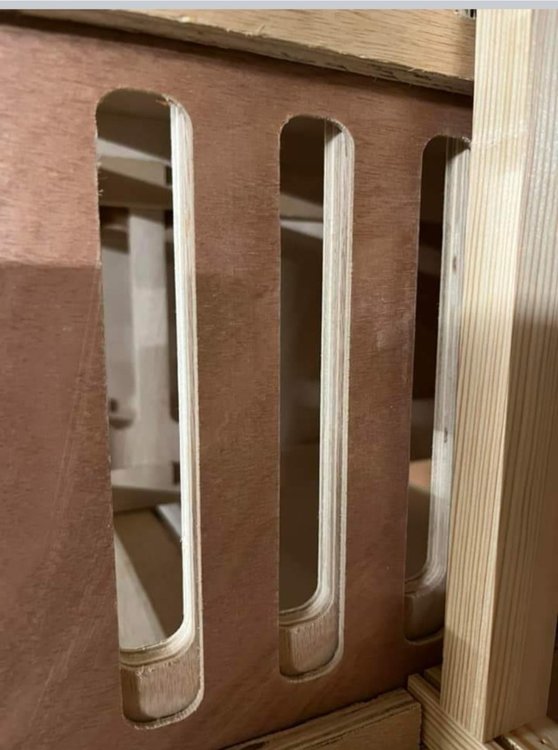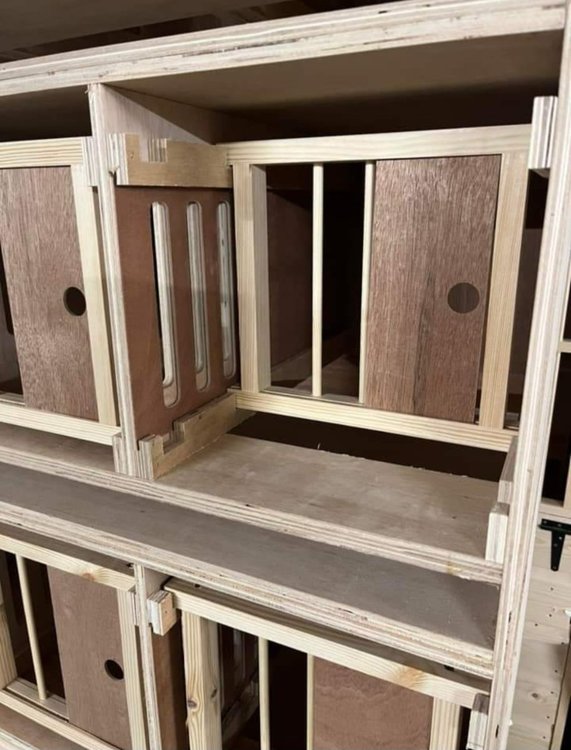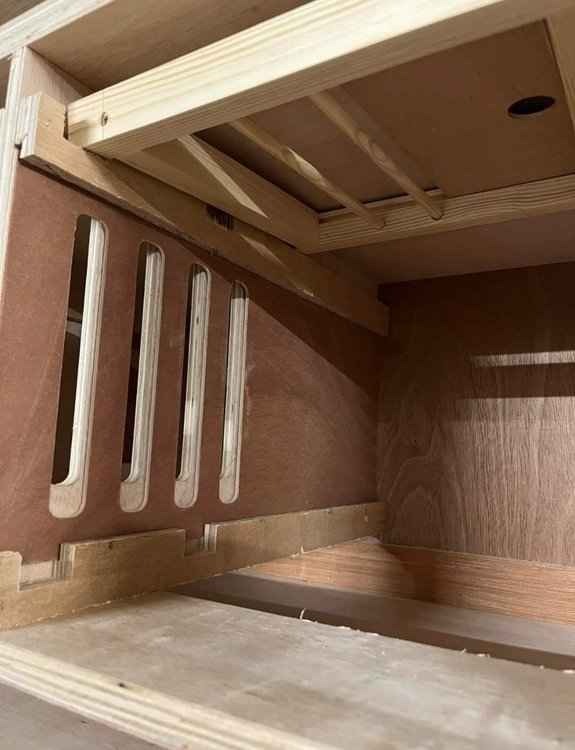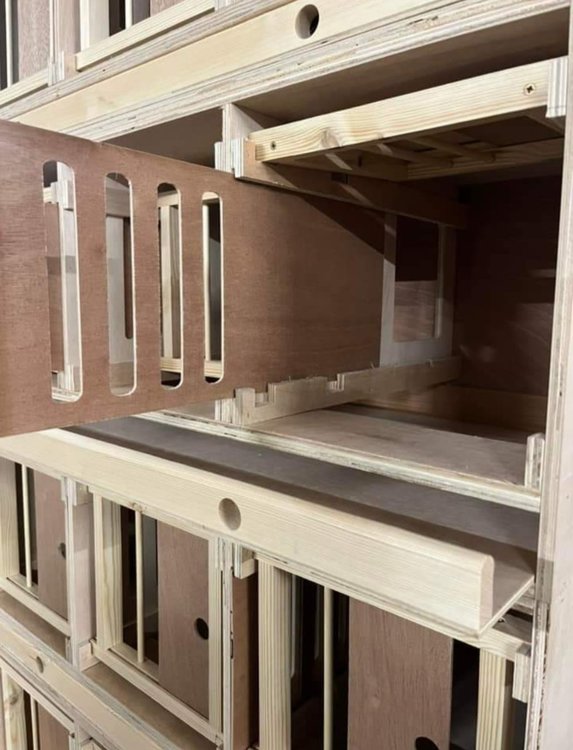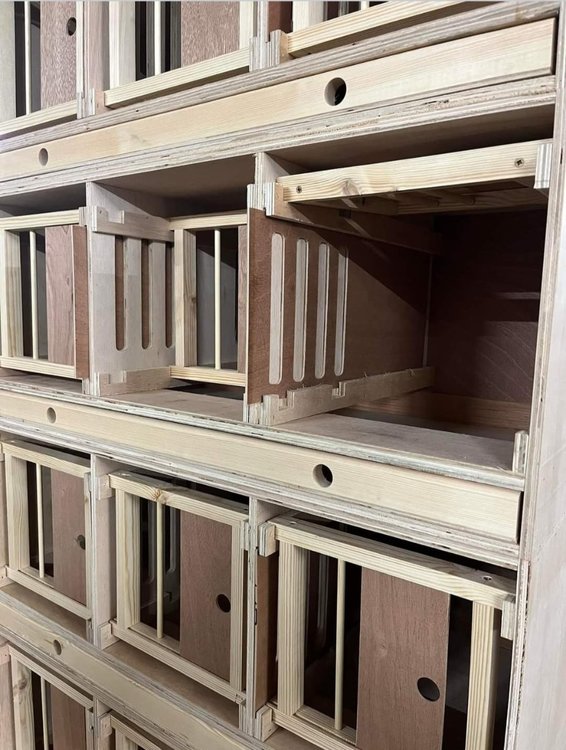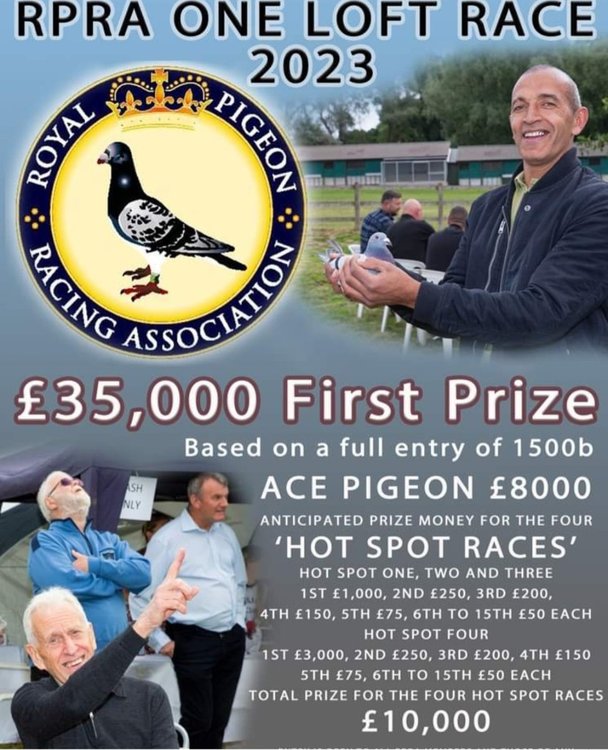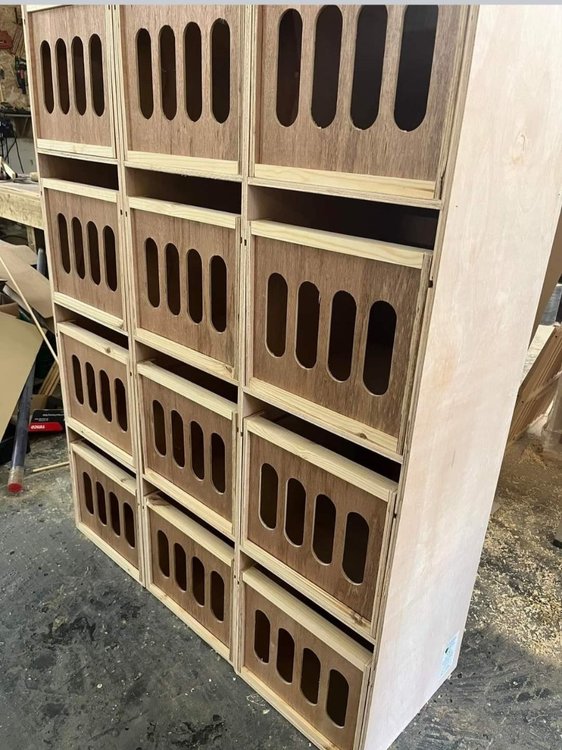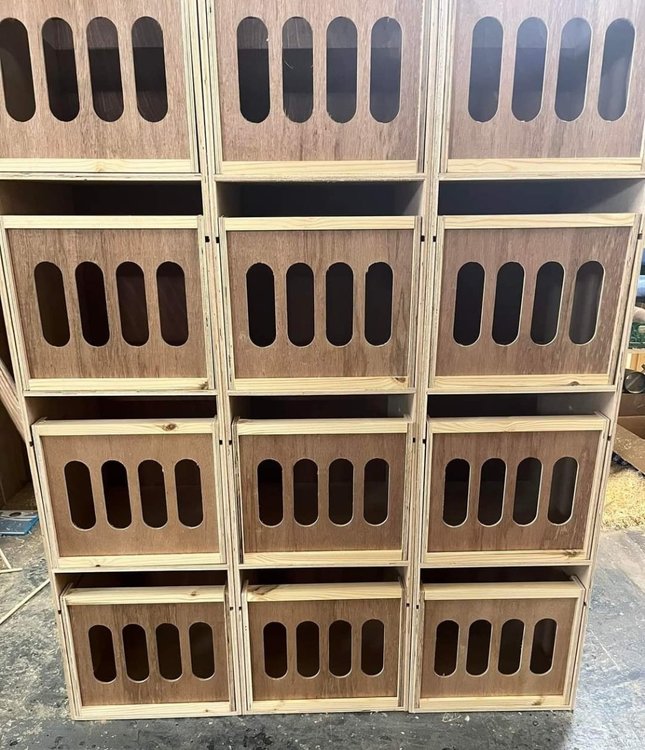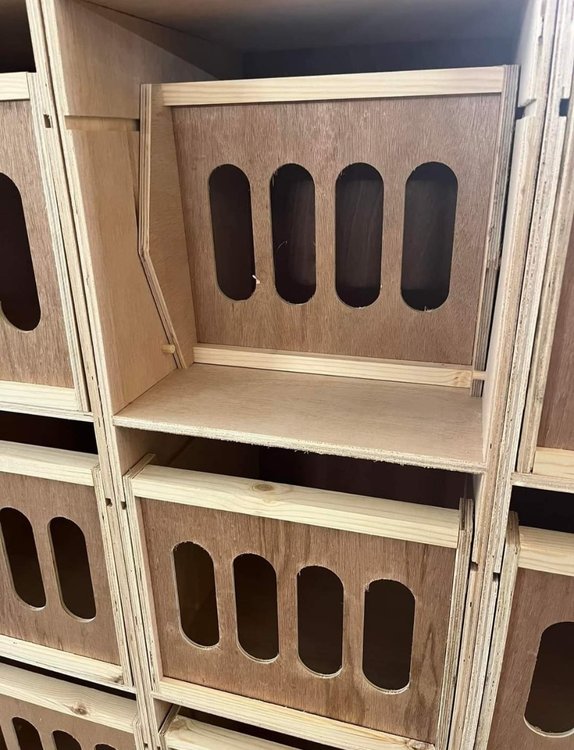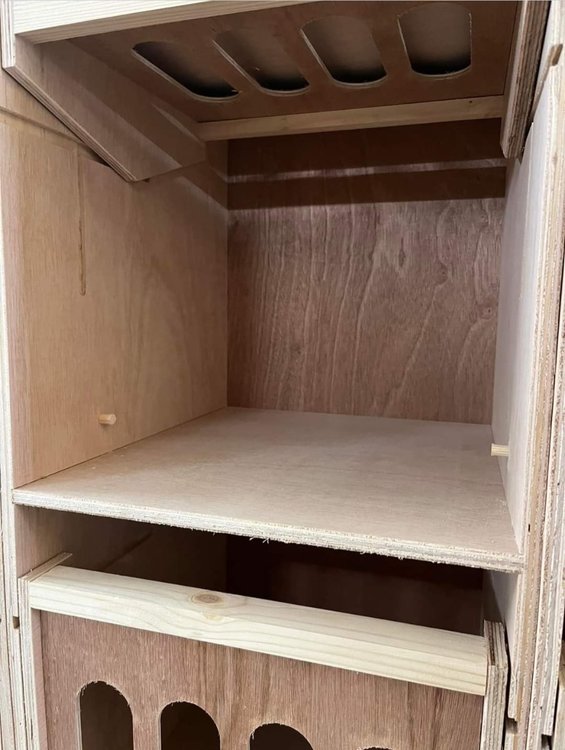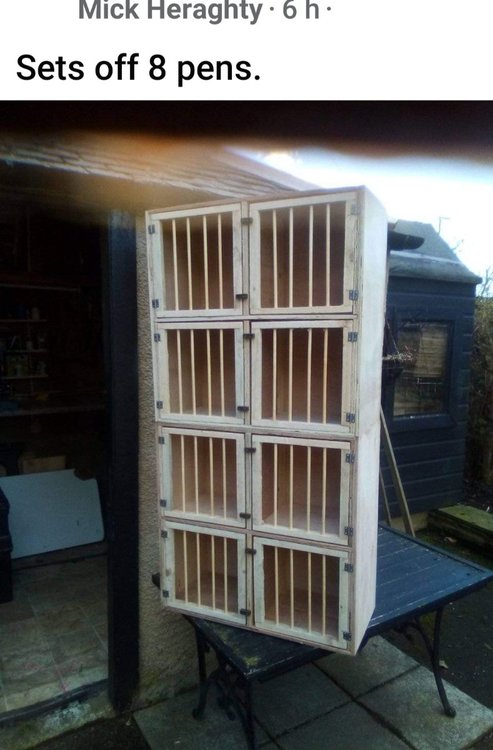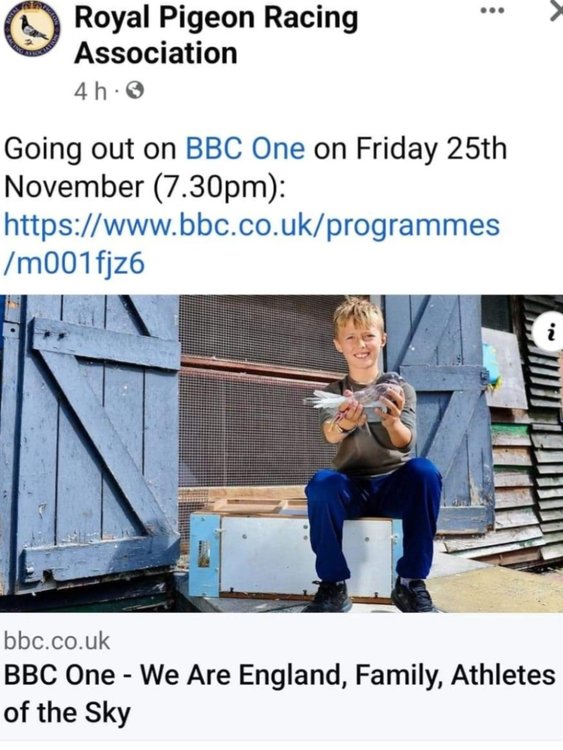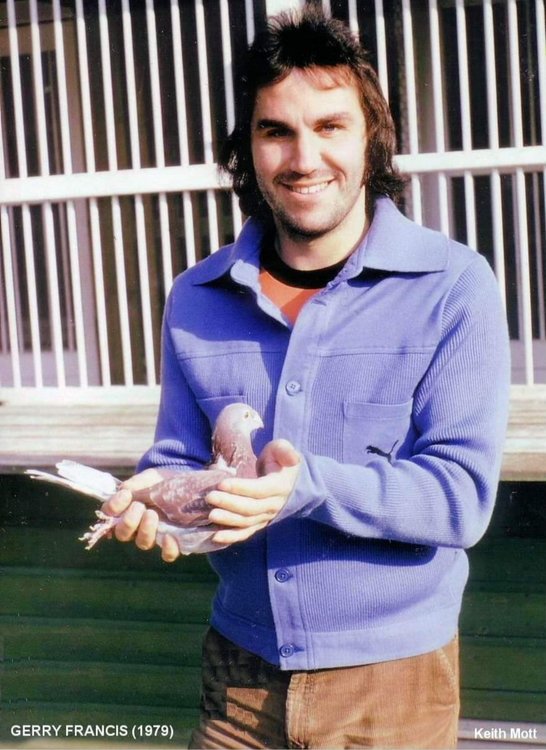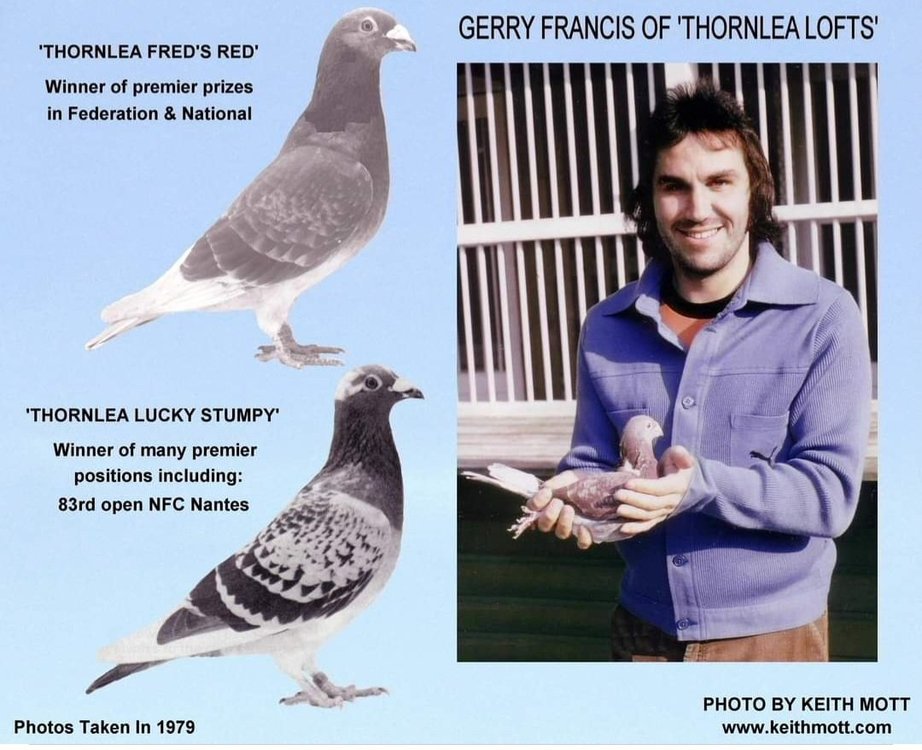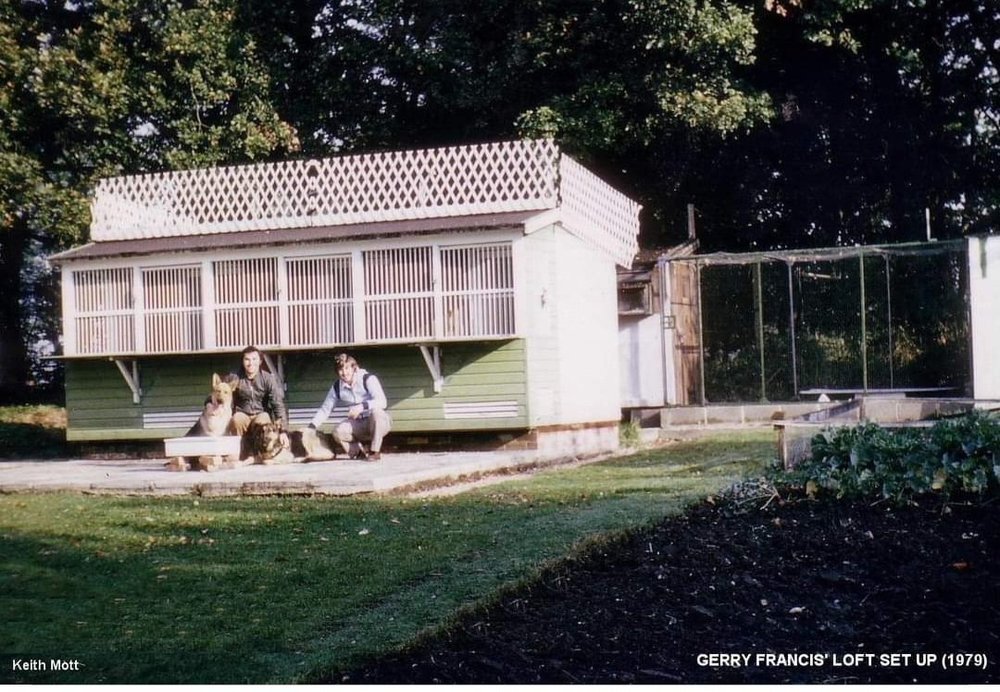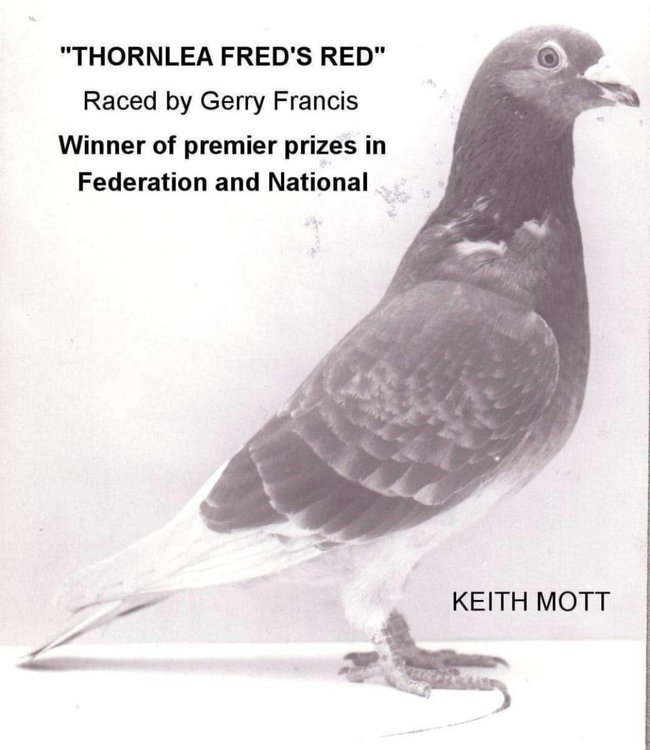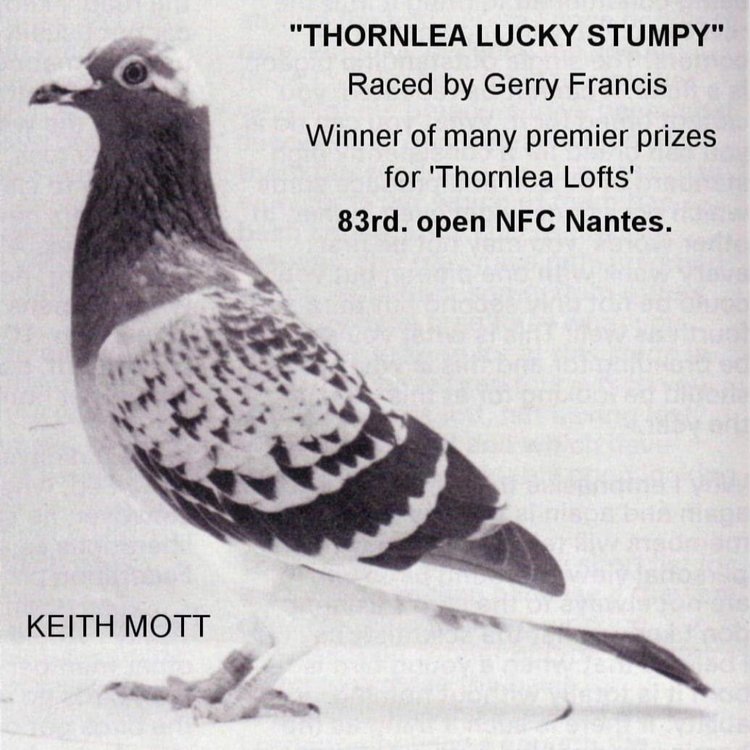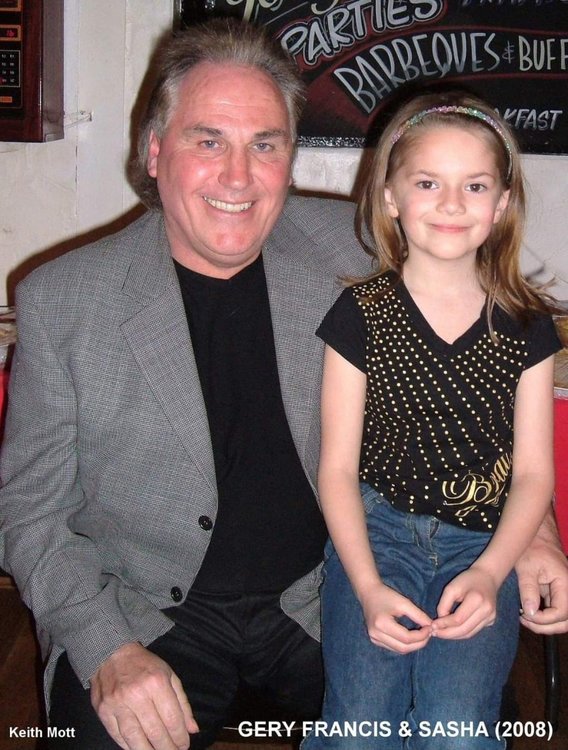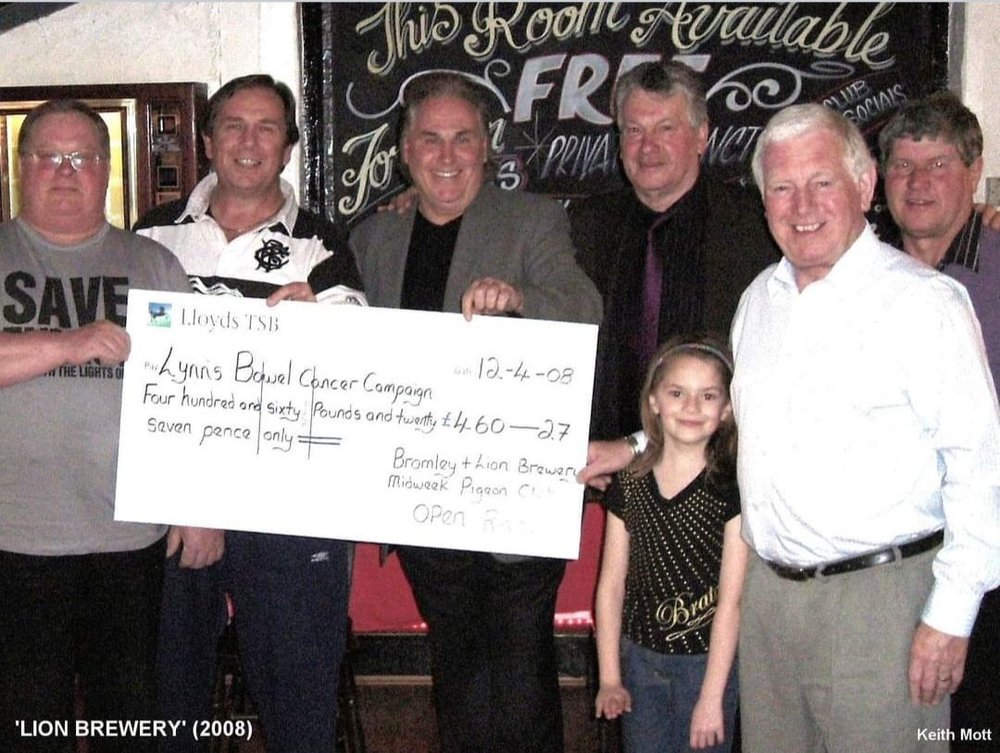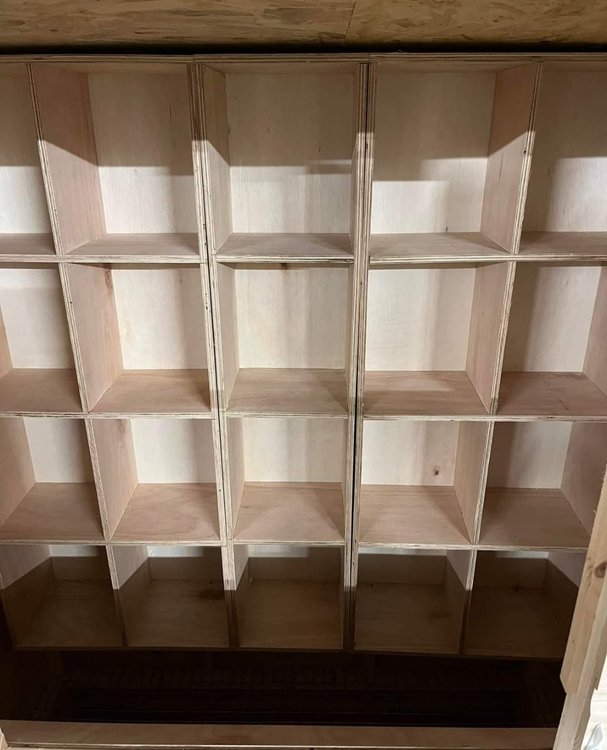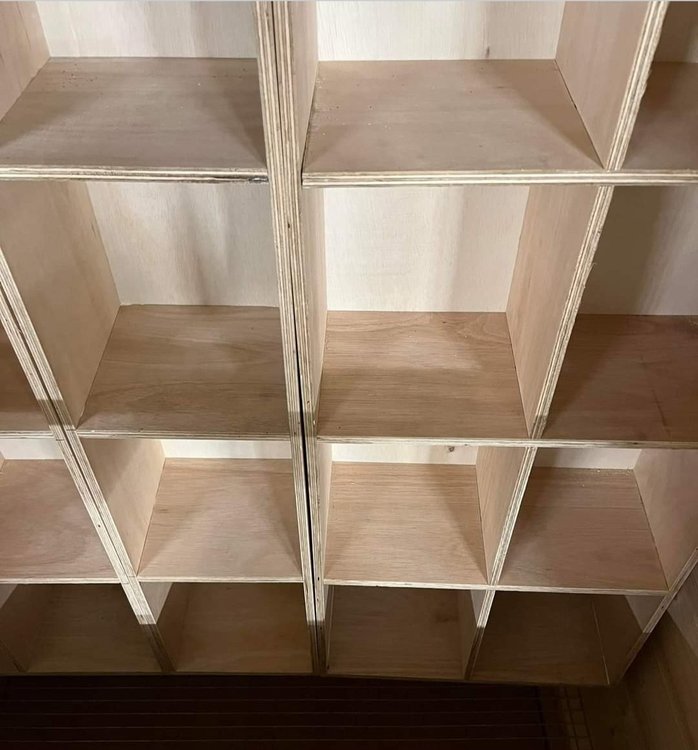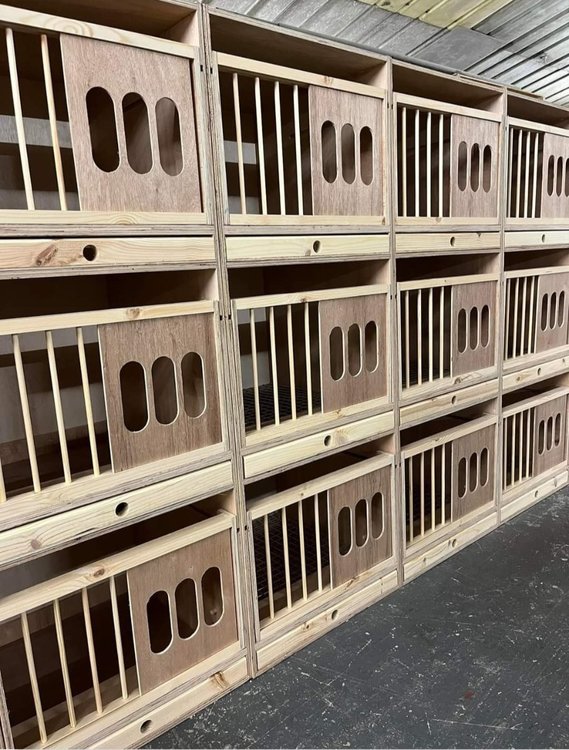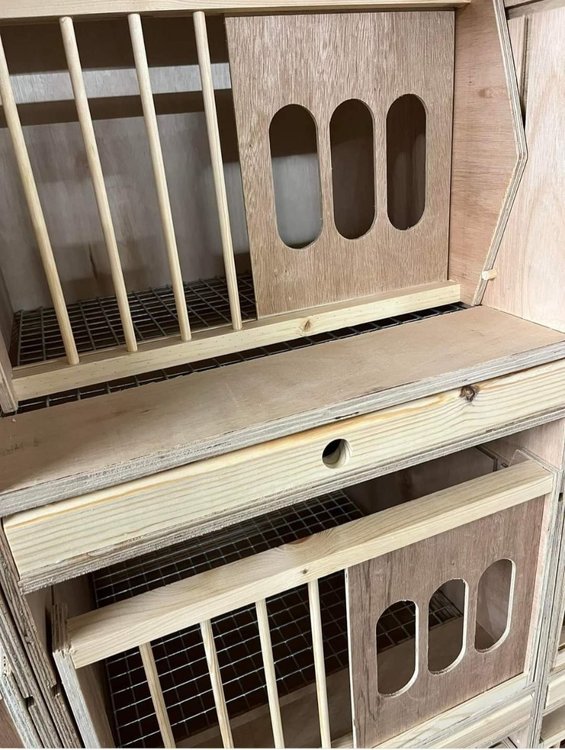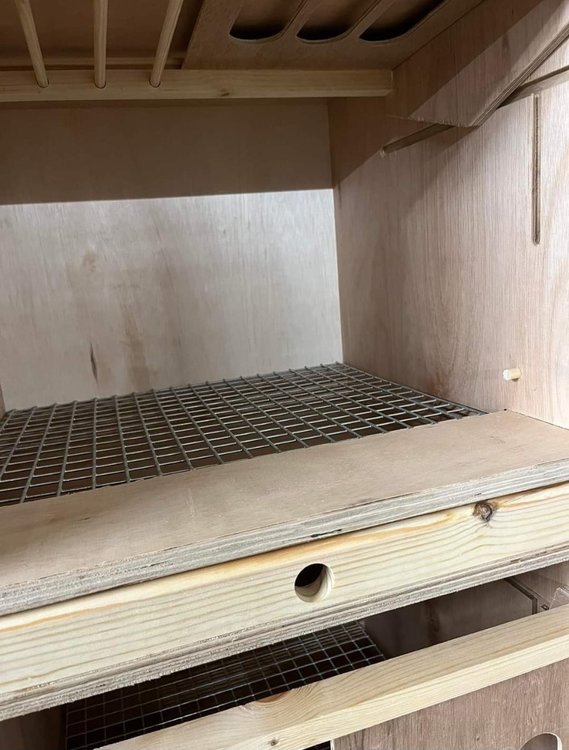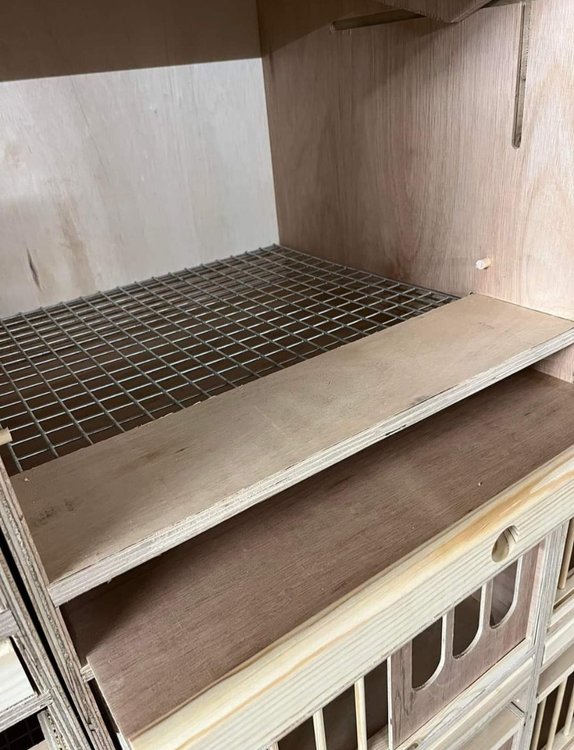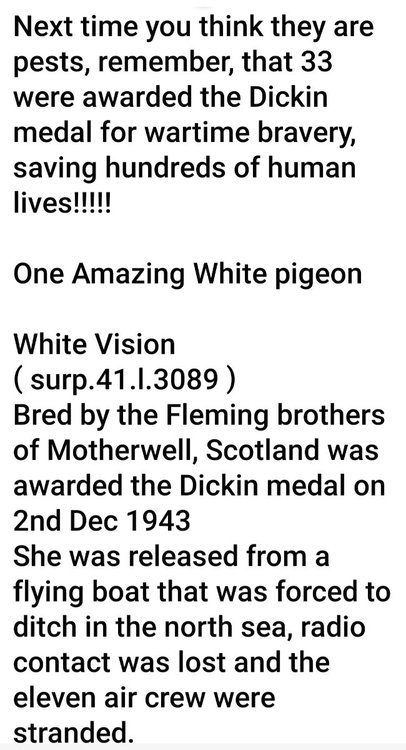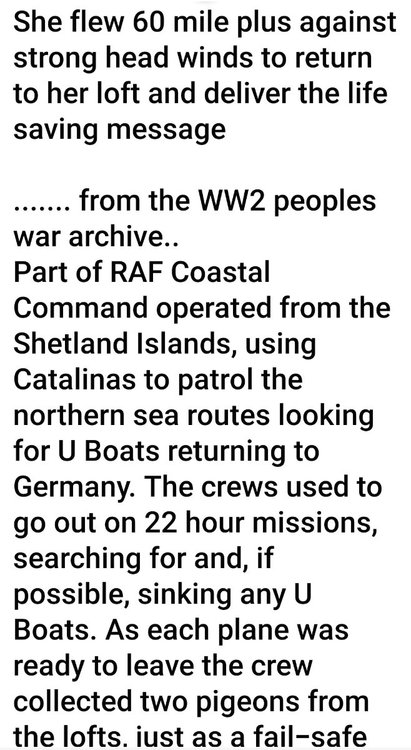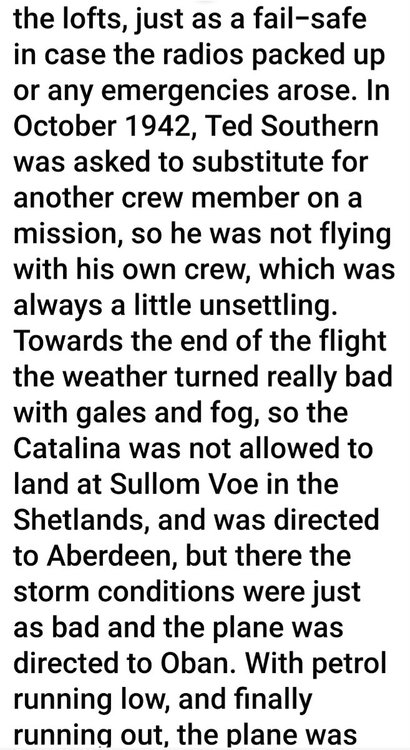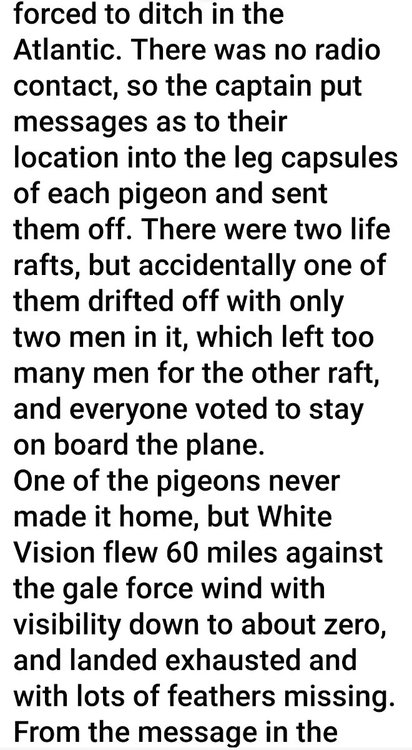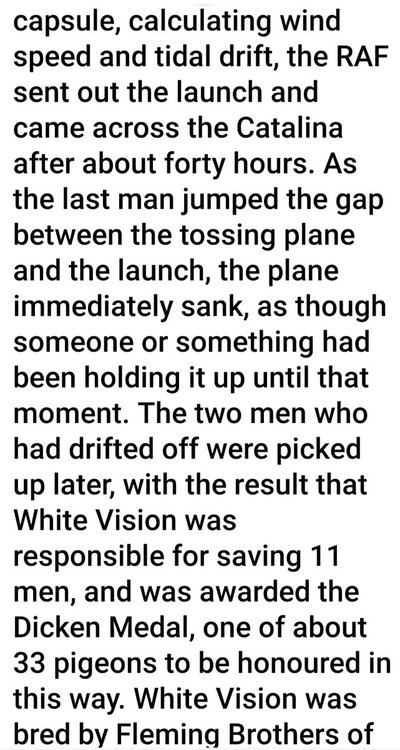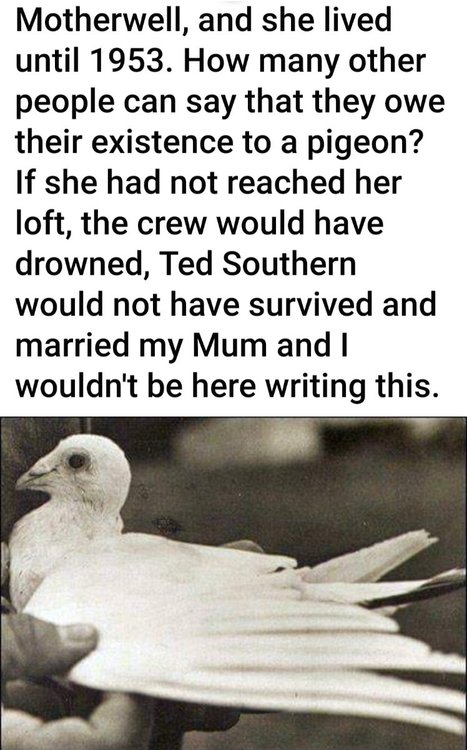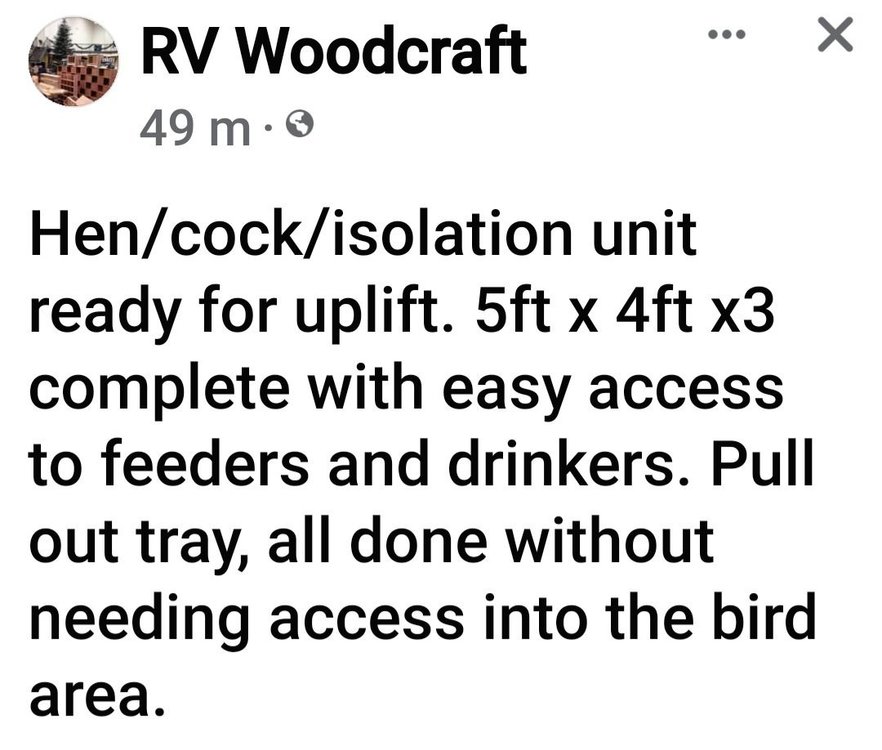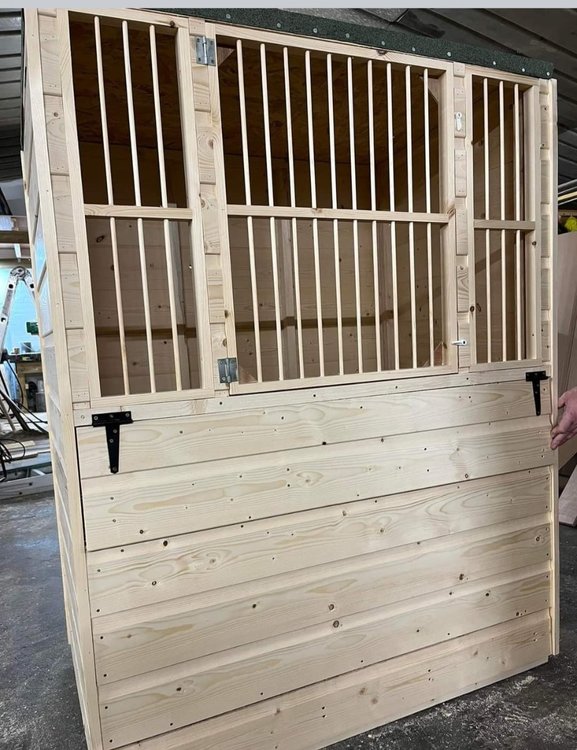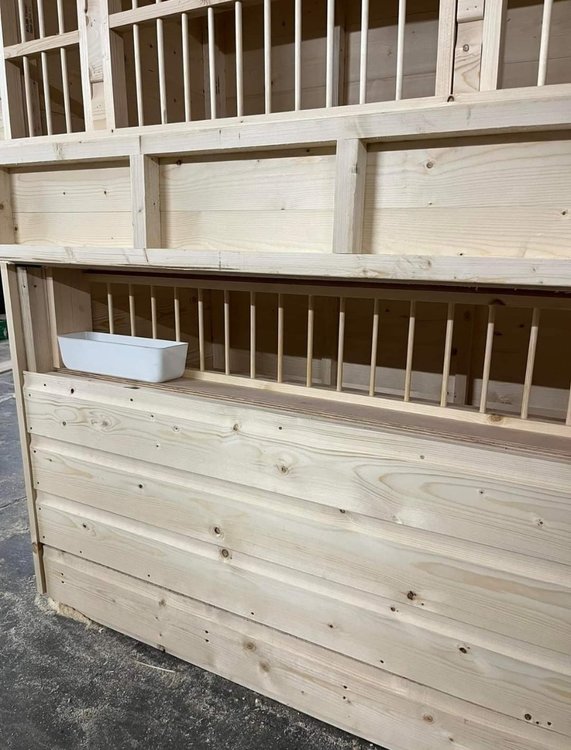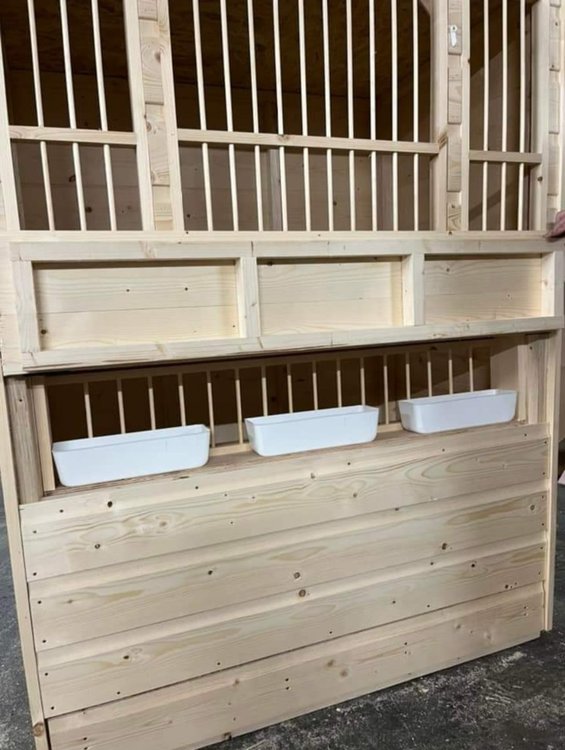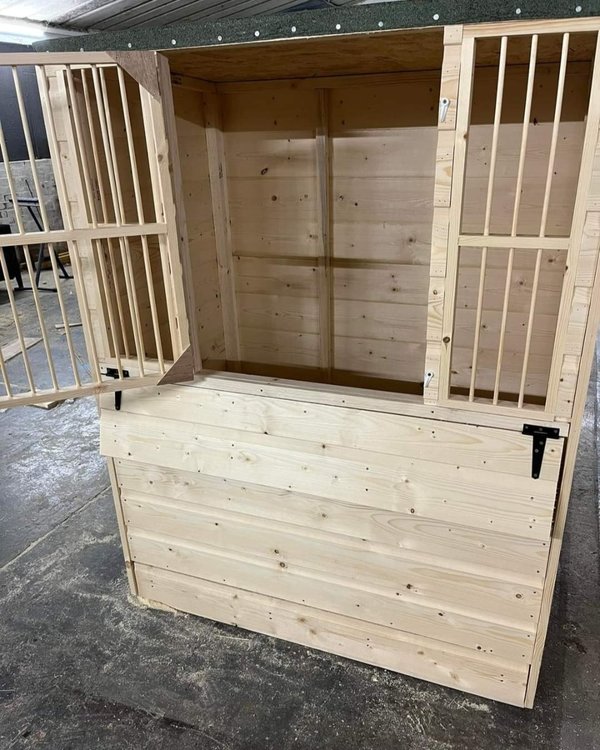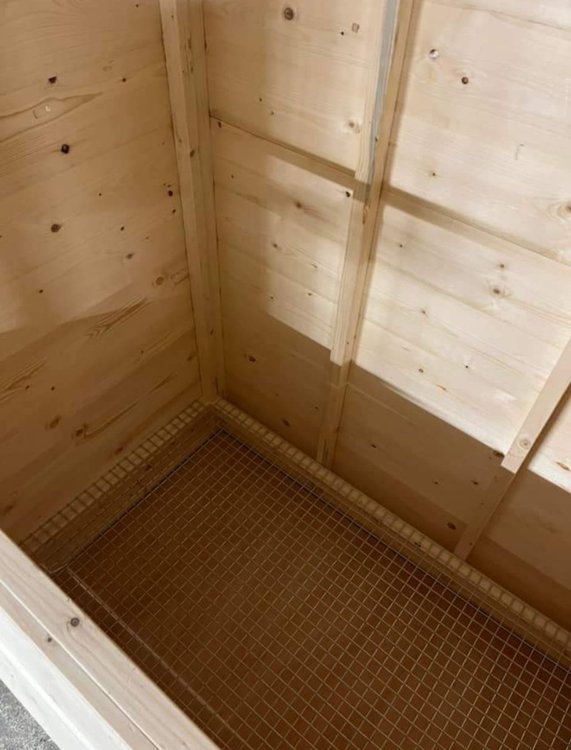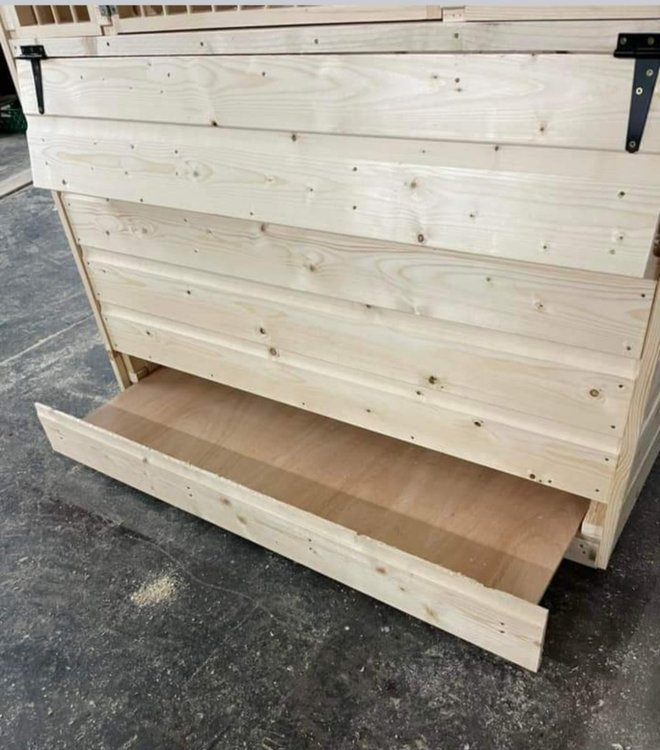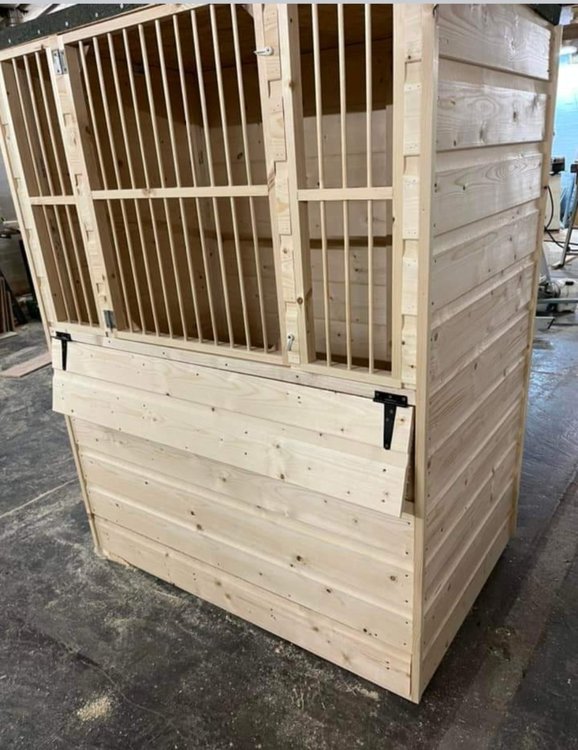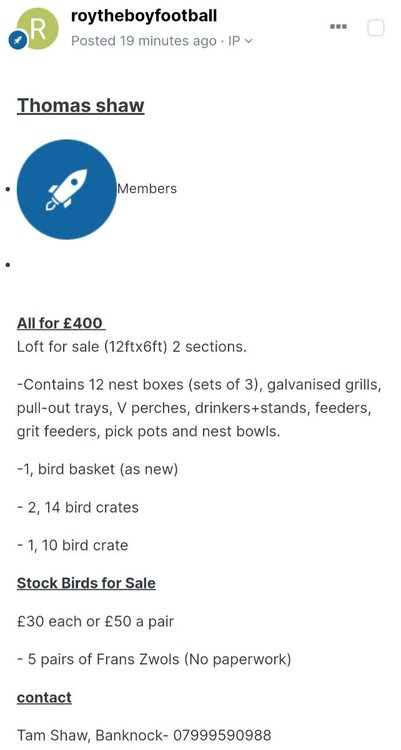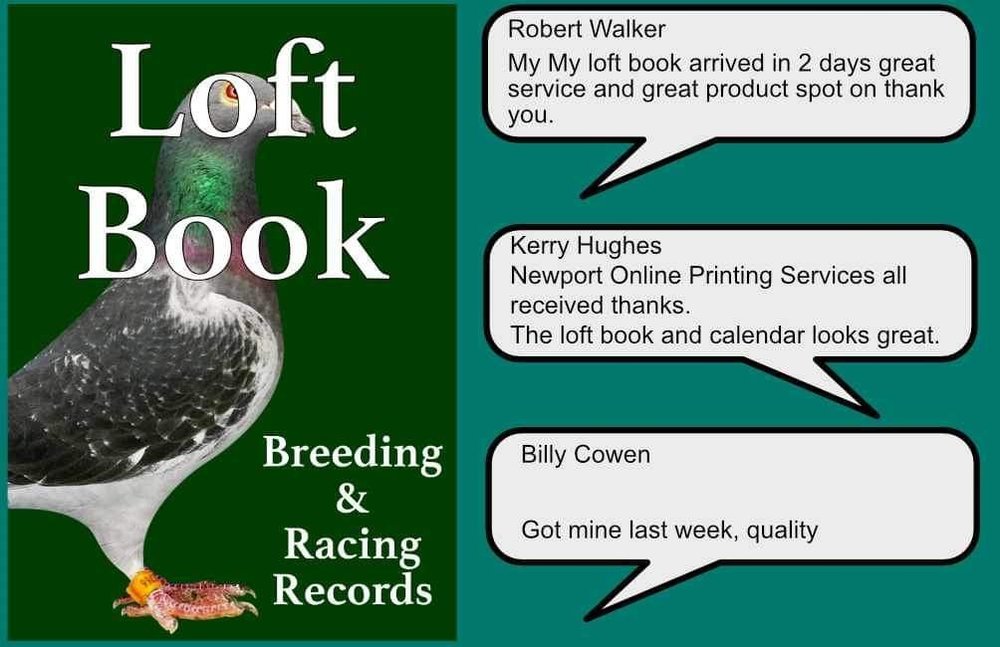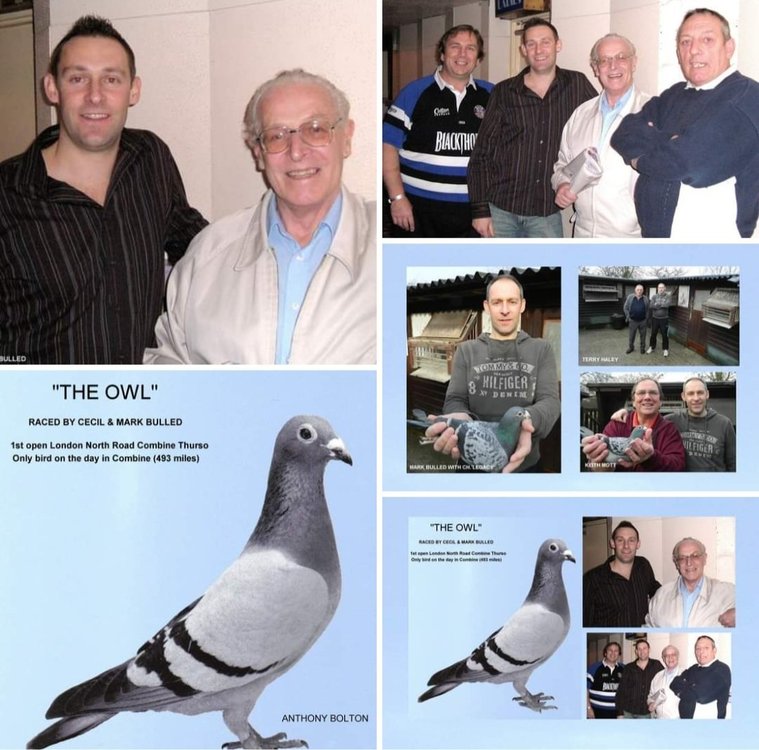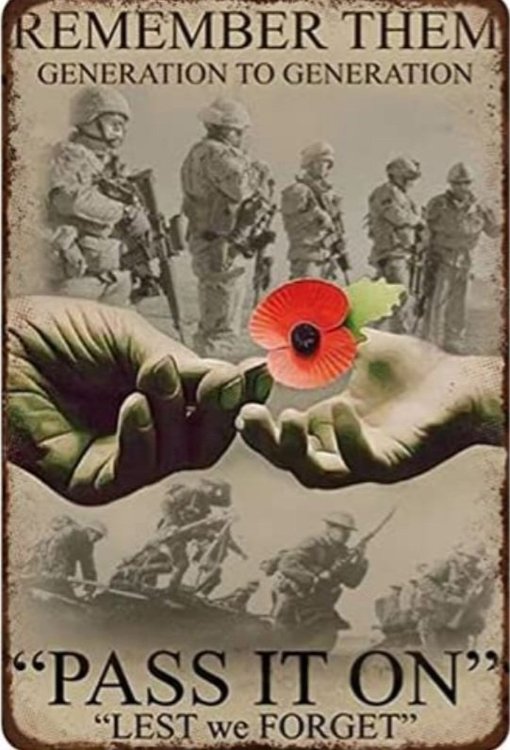-
Posts
35,922 -
Joined
-
Last visited
Content Type
Profiles
Forums
Events
Everything posted by sapper756
-
Wishing Raymond a very speedy recovery.
-
UP NORTH COMBINE LOFT VISITS (PART 1) Rod Adams of South Shields. In my near 50 years as a pigeon fancy press ‘scribe’, you can imagine how many premier lofts I have visited over the years and my visits to Rod Adams’ railway siding racing loft are some of my most memorable. I first became aware of Rod Adams in the early 1980’s when I saw him on ‘The Fancy’ television programme, which featured the Up North Combine and some of its premier members at that time. It featured several top lofts, including Ralph Iley and Bill Porritt, who’s lofts I also had the great pleasure to visit in later years. ‘The Fancy’ was one of the best things, featuring pigeon racing I’ve ever seen on TV and it remands one of my favourites until this day. I don’t think Rod races his pigeons now, but like myself, writes in the fancy press regularly and keeps a few pairs of birds in his back garden to play with. On one of my most recent trips to the North-East of England I had the great pleasure of visiting the railway siding loft of the pigeon ‘scribe’ and one of the premier long-distance fanciers of the mighty Up North Combine, Rod Adams of South Shields. I have visited his establishment several times over the years and first visited Rod's loft with the “Many Miles with Mott' video camera in the mid-1990’s, and since then he changed his loft for a new ‘L’ shaped structure, with a pan tile and plastic roof. The smart new building is about 40ft long and has open-door trapping into a full length corridor, which Rod likes because he can stand in the dry and can observe the inmates. The best feature of the new set-up is, in my opinion, the white plastic cladding on the front, which is completely water proof and will never rot. I must say though, it was a bit sad to see his old green loft gone, as it was one of the most famous in the North-East of England, being sited on the allotment by the railway tracks. Rod is a man of character, holding great respect in our sport. On our arrival at his lofts, he invited, 'Big' Bill Young and myself into the cabin and made us a nice cup of tea. For many years he had concentrated on the longest old bird race from Bourges, which is 570 miles to the North-East. In recent years he has been rewarded for his dedication by winning 1st open Bourges in the mighty UNC. He maintains that there is nothing better than a pigeon that flies 15 or 16 hours home on the night from this race point. His greatest performance, he feels, was his Bourges Combine win, although through the years he has had some good hens which have had dual high positions in the UNC returning on the night from Bourges. Also, the loft has recorded five times 1st Federation from Bourges in the last few years, which is a fantastic achievement. When I asked how long he'd been in the sport, he told me, 'I have kept pigeons since I was 10 years old, but I have been racing on my own since I was about 20, having kept birds now for over 50 years. I was fortunate enough to start off in an area where we had when we were about 16 years old, what we used to call a 'Pudding Club', a boys' club where we raced each other for a pot of money. 'Gradually, after looking after other people's pigeons, I decided to fly my own in 1959 and I was fortunate enough to fly behind a man who was a living legend in South Shields, a guy called Tommy Burke. Tommy taught me how to race pigeons. At that time I couldn't win any races but I got Tommy's pigeons, acquired his methods, and in the space of about 5 years I was winning inland averages. In 1971 I was flying in partnership with a guy called Herbie Elliott. In that season we had 16 times 1st inland, but we couldn't time from the distance, so I decided there and then , to get rid of inland pigeons and concentrate on the distance’. Rod won the UNC from Bourges with a lovely little chequer hen which he had called 'Little Miss Bourges'. I asked him a little bit about her background and about her build-up to her Combine win and he told me, 'They must be bred to do the job. She’s bred from a full brother to the two good hens that were actually given to me by Alan Hindhaugh. Now, the dam of this hen is bred through Sonny Galloway's Combine winner called' School Mistress', and down to a hen off Herbie Elliott called '2953', whose dam actually had three times 1st t federations on the Channel including 9th Open Combine Melon. 'When this little hen was a year old,' said Ron, 'I told some Scottish fanciers that I’d win the Combine from Bourges with her and in fact I called her 'Little Miss Bourges' to make the point she's small, she's female and Bourges is a long way away. When she was a yearling I simply took her to Lille, which is about 350 miles and out of there she came home on the day. As a two year old, the race that actually made this hen was the Greater Distance Club race organisation that we had in the North of England with about 50 fanciers devoted to long-distance racing and this little hen went to Sartilly. I hadn't realised how west Sartilly was, about 436 miles to me, and in fact the winning pigeon took about 12 hours. I had actually looked up and thought the race was finished. She was the sixth bird home on the day, wasn't touched and she had learned from that experience. She'd gone up the wrong side of the country, but rectified her mistake. 'I let her sit for a month, sitting on eggs 12 days and sent her back to Bourges, which is 571 miles and we got a very strange race. The birds were liberated very late. In fact, it really was a two-day race and she turned in the next morning about 08.30hrs to be 30th open Up North Combine. The following season I sent her to the equivalent of Sartilly, which is Pontorson, maybe 45 miles more (possibly 40 miles) with the Northern Classic and she was clocked at 20.00hrs. As she wasn't tired, I lined her up for Bourges. She was sitting 12 days when she went and her youngster was still following her around, being not quite full grown and still sitting in the nest box with her. I gave her about three 35 mile tosses and in that month she literally had an open hole all the time. She was sent to Bourges fully pooled and I expected her to come. It was her fastest race and I was actually putting the birds in the car for a mainland race when she came. I lost no time and she really came well, not looking distressed at all. She's a beautiful little hen, evenly marked, very calm. She has a nice temperament and she's always been a bird I've fancied'. Rod is one of the personalities in our sport and has a great knowledge of racing pigeons and when I asked him about his management he told me, 'It's totally natural. I've never flown widowhood but I do fancy going with a small team to 600 miles. I normally pair the birds up the first week in March and keep about 40 pairs of racers which are all dedicated to 500 mile racing, sooner or later. 'I'm not a heavy trainer, giving them enough training early in the season so I don't lose them. There isn't a bird born that can't be lost at 80 miles on a bad day and I try to give them a select number of races. The older birds go to, say, 500 miles and will only get three races on the build-up, perhaps one at 80, and one at 150, then they go to Lille which is 300 miles, then Bourges, which is 570. I tend to race the yearlings on a more regular basis and they have to go to 400 miles. I'm fortunate enough to be able to get reasonable corn from the farm or fancier friends and I virtually hopper feed beans and peas from the farm, which I mix with a decent commercial mixture as I get nearer the Channel races, supplementing the feed with about 30% maize. My favourite condition for sending them to the longer races goes back to the days of Tom Kilner, who was a legend in the UNC. He always sent his birds 12 days sitting at basketing and I maintain mine at 12 days on basketing, although I've had some good results with birds on very small youngsters. There's no such thing as a system that suits the whole loft. What you have to do is pick the individuals out of the team. I've always said you can't breed a Combine winner; you have to breed the gene pool. Out of that perhaps you'll get a decent pigeon. I've always made my mind up that if anybody gave me the chance of two pigeons in the nest bowl, I would always take the smaller one. I don't think big 500 / 600 milers exist. If they do, they're one-off jobs and they never come again. My ideal pigeon for Channel racing at 600 miles is small to medium and I must say I do prefer hens.' Rod's pigeons looked very contented in the very spacious old bird section. When I asked what families of pigeons he races, he replied, 'Just an amalgamation of a lot of birds, mainly obtained within the UNC when I first started off and decided I was going to fly the Channel. I basically went to established Channel fanciers in the area - Billy Knapp, Billy Gibbons, Sonny Galloway, Ayton Marshall, well established names and I used these birds as a base. I turned out some pretty good performances over the years, crossing with Herbie Elliotts and one or two more birds, but the turning point came when I got two hens off Alan Hindhaugh, which were cousins to the 'Mean Machine', an exceptional bird in the UNC. These two hens, which were basically Busschaerts, turned in some tremendous Bourges performances for me, flying three times on the day between them and five times in the Combine result. I can take you into my stock loft now which is behind my house. It's a small loft; maybe 12ft long with an aviary and contains nothing except birds that are either bred from Combine winners or birds that have put up exceptional performances from Bourges. Within that block I have birds from these, late breds, and these are bred from the original stock and from the present team. I've always been conscious of the fact that in every area there are good individual local people so I collect all these winners from whatever areas I can within the UNC and bring them into the stock loft. I have about 14 pairs of stock birds. I've got light available and the loft is alarmed and I have an insurance policy because of the very fact that I have birds on a local site. I asked him if there is a type of pigeon he likes and he answered, 'Well, I think if you bring birds in you have to bring in the type that you like. I could get pigeons off Tom, Dick and Harry and they won't be as good as my own. I look for birds that have got a performance history of 500 or 600 miles. There was a time when, if you got birds from Bourges by 9 o'clock on the second day, then you would have won 70% of the clubs. Now it's more a time when you see speed, so I look for birds that are the same size as mine, medium to small and birds which have an ancestry of flying distance races'. Rod likes to have between 50 and 60 young birds each year to race but because he prefers every pair of old birds to have a pair of youngsters he sometimes has more than this number, the surplus donated to charity sales. He trains his young bird team much the same as most fanciers, training and racing them through to 200 miles, just to educate them for Bourges. In later life, he races his young birds natural to the perch and when I enquired of him what he thought of the darkness system, he told me, 'It's been in my area for about 10 years and there isn't any doubt that when watching them racing, it's very impressive. I've never flown it because I'm interested in those birds as 2ys and I have a sneaking feeling that a lot of the top fanciers in the North of England, who've been on the darkness system, are tending to come off it. I also have a sneaking feeling that there might be a price to pay which there always is, whatever you do. You can't even force rhubarb without paying a price and I think later in life something might happen with those birds'. Rod's loft is very natural and all his young birds run with the old birds all through the season, only to be split up at the end of the year. The old bird racers are allowed to nest anywhere: if a pair wants to nest in the comer of the loft, on the floor, they are allowed to pure happiness, pure contentment, that's the name of the game. Did Rod think the sport has progressed in recent years? 'In the physical aspect of the sport, e.g. feeding, veterinary medicine and performance, I would say yes. The standards are much higher and they have progressed very much. When I was a young man, performances were put up which these days wouldn't come close. Some of the top fanciers of yesteryear would just not be in the hunt these days and training systems like widowhood and darkness for the youngsters and roundabout were all unheard of. The pigeons are more athletic as it is very, very rare now that velocities drop below 1000ypm. 'For most races, feeding has become an art. The corn available is better than it ever was and whilst vets haven't progressed very much in terms of what most of them know about pigeons, the average fancier's knowledge about diseases has certainly increased. However, I have to say that a lot of fanciers who self medicate their birds use antibiotics as if they were talcum powder and they're probably doing untold damage. 'Fanciers get into the habit of winning races and some top fanciers who don't win get quite annoyed. As far as some of them are concerned, there are only two types of pigeons- winners and sick pigeons- and can guarantee that if a top local fancier goes three or four weeks without winning a race, he thinks his pigeons are sick, but it isn't necessarily so. Timing mechanisms and clocks have all improved; quality of pigeons has improved; access to birds has improved. I must say that here in the North of England we've got a saying that you get your best pigeon for nothing and these pigeons come about through friendship. If you want friends in the sport, then you have 'to work at it'. Whenever I judge at the NEHU South Shields Show I always try and meet up with Rod, and I must say he always looks in good form. I always derive great pleasure from meeting Rod Adams and seeing his wonderful team of long-distance racers. He is a wonderful man and a brilliant pigeon fancier! Full article to appear in the BHW soon. (November 2022)
-
Tonight Sky Channel 955 7.30pm
-
-
-
I think it must be BBC1 down England
-
-
-
Gerry Francis – Footballer and Pigeon Fancier! Many years ago I visited the lofts of Gerry Francis and at that time he was at the very top in English football, playing for Crystal Palace. Of course Gerry went on to become a very successful manager with Q.P.R. and Tottenham Hotspurs, and this is an account of my vist to his Berkshire home in 1979. Whenever one read of Gerry Francis, one always read 'Gerry Francis, Crystal Palace and England football ace, winner of many major awards including 13 International caps for England', but you never read of Gerry Francis the pigeon fancier, and how good a fancier he was despite the pressure on his time from his many footballing commitments. There are times when Gerry doesn't see his pigeons for days on end. He had been in the sport on and off since 1959, he said his first loft measured 2 feet x 4 feet and it was something of an innovation as it was mobile, yes, mobile. It was built and attached to pram wheels so that it could be moved in great haste when the rent man called as Gerry was not supposed to keep pigeons where he lived then. Gerry is from a pigeon racing family, his father Roy, and two uncles, Fred Harrington and George Francis were all active fanciers. He has a very high regard for his uncle Fred, who, he said, taught him a lot about pigeons. Gerry became interested in pigeons when he was about eight years old and raced with his father in the City Arms H.S. at Hammersmith. His first pigeons were from George Harrowell of Shepherds Bush, these birds were carefully broken to their new loft by Gerry. After he had successfully broken them, the local council promptly ordered him to get rid of them. It was my friend Mick Worsfold who took me down to deepest Berkshire to visit Gerry Francis' 'Thornlea Lofts' and for a change we had some sunshine on the lofts for the photographs. This was a standing joke as it always rained on my loft visits with Micky Worsfold, and on the way down we were driving through thick fog, and I reckoned that the Worsfold curse was running true to form. Gerry started racing from his present address in 1977 with seven Harrington latebreds from his father. One of the stars of the loft was a pigeon known as 'Thornlea Lucky Stumpy', he was one of those original latebreds and acquired the name 'Lucky Stumpy' because he returned home from a race minus three toes and suffering numerous other injuries. After recovering from those injuries this gallant blue chequer pied cock went back on the road and won in 1979: 50th Section E, 83rd Open N.F.C. Nantes (10,367 birds), 4th club Bergerac (453 miles) with only seven pigeons recorded in the club in two days, he had also won 15th Federation Weymouth (1,847 birds) and 4th Hansur Open Weymouth. 'Lucky Stumpy' was also proving his worth as a breeder, he was sire of a chequer pied cock 'Garth' who had only had four races and taken four positions, including 23d Federation with 1,330 birds competing. Another of the Harrington pigeons to do well for Gerry was a blue chequer cock known as 'Thornlea Bourne End', he recorded 2nd club, 14th Federation, 26th Open B.T.B. Combine Niort (3,750 birds). On the subject of eyesign, Gerry said he didn't know enough about it to base his pairings on it, but he did admit to having a liking for a pearl eye. The lofts housed various strains, the Harrington pigeons were of the Logan¬Savage Barker-Osman lines, there were also Dordins from Paul Smith, Cattrysse from Les Davenport and pigeons from F Wiltshire of Oxford. We got onto the subject of young bird racing and Gerry said that he didn't believe in pushing youngsters hard, in fact he had found that his best pigeons in later life were those that were only trained as youngsters and not raced. He also said that he disliked sending yearlings across the Channel. The lofts consisted of a three section racing loft with corridor trapping, plus two stock lofts joined by a nice spacious aviary. There were 10 pairs of stock birds and around 15 pairs of racers, it was usual for him to breed around 25 youngsters a year. Floor dressing consisted of a sand and lime mixture which was changed every few months. The birds had an open loft, but even so, were kept under control. All birds were raced on the natural system, always trying to get to know each pigeon as an individual, this way Gerry thought you discover each bird's best racing condition. When it came to training, the birds were not trained on a specific line, but in any direction, to all points of the compass, thus giving the birds a good sound education and at the same time making them think. On the subject of food, Gerry thought maize was a very underrated food and fed a lot of it with peas and beans added. On this visit we spent a lot of time in the stock loft, which housed some excellent pigeons including direct children of National winners. Inbreeding and line breeding were practised to create a family, although the occasional introduction was made, if it would do the family good. Although a great many fanciers do not like latebreds, Gerry was the opposite and really liked a few of them as he reckoned if they were schooled well in early life they would be as good as a youngster bred at the normal time. The one thing that he didn’t like were wild pigeons, they all had to be quiet and good natured in the Francis loft. At that time Gerry's pigeon activities were overshadowed by his commitments to football, as had been the case really since he left school. His football career started as a lad when he played for a social club in a Sunday league, this was his only chance to play, as his school was rugby orientated. The opportunity eventually arose for him to be able to train at Queens Park Rangers on a Tuesday evening each week. These training sessions eventually led to him signing as an apprentice. When he was 16 he made his first team debut for the club against Liverpool in the first division, since that time he had won 13 international caps. However, professional football did not give him much time for his pigeons and he said that it was only thanks to several good hearted local fanciers who helped him by often taking his clocks and his birds, that he was able to race at all. However, I am sure, that now that football demands less of Gerry's time, he is now more, Gerry Francis the pigeon fancier. I hope my readers have enjoyed this special walk down memory lane! Gerry is still racing his pigeons with outstanding success and is a great worker for the sport of pigeon racing. (November 2022)
-
The late, great Cecil Bulled of Harlow. Mark Bulled is the son of the late, great Cecil Bulled, who was one of our greatest North Road racers of all time. Mark told me, ‘the best feeling in pigeon racing is to clock in late at night from 550 miles and my real love in the sport is the long distance events. My best pigeon moments were just sitting with my dad waiting for the Combine pigeons! Mark has been in pigeon racing all his life, coming from a brilliant family of pigeon fanciers, with his father being Cecil Bulled and his grandfather being Sid Marsh of Croydon. He tells me his dad started up in pigeons on meeting his mother, Barbara. Pigeon were always a part of Mark’s life when he was a lad, cleaning out the loft and training the birds with his dad, but started to get really keen at the age of about 14. He was very close to Cecil and the pigeons gave them a lot of time together. Mark is now a long distance racing 'legend' in his own right, winning in recent seasons: 1st open NFC Tarbes, 1st open L&SECC Tarbes, 1st open BBC Fougeres, 1st open BBC Fougeres, 1st open London NR Combine Berwick (Yearlings), 1st open London NR Combine Lerwick, 2nd open NFC Messac, 2nd open BBC Bordeaux, 2nd open BBC Fougeres, 3rd open NFC Messac. Fantastic pigeon racing by any standard! When racing with his late father, Cecil, he recorded 1st open London NR Combine Thurso, 1st open London NR Combine Lerwick (four times), 1st open L&SECC Thurso, 1st open London SR Combine Bergerac. I first met Cecil and Mark Bulled in the mid-1990’s, when I visit their home in Harlow with Doug Went to film them for the ‘Many Miles With Mott’ video series. What great day out that was, the partners were winning it all in front of them and Mark was busy working to set up his own team of pigeons at his new address. The next time I met them was in 2001, when with the foot and mouth epidemic and resulting ban on racing from France, the London & South East Classic Club switched from Pau to Thurso in the north of Scotland for the longest old bird race. The Thurso race was won by Cecil and Mark, whose past performances on the north road have been electric, being especially deadly at Thurso and Lerwick with the London North Road Combine. After he recorded 4th and 5th open L&SECC Perth in 2001, I predicted that he would win Thurso and he did! The Bulled loft sent ten pigeons to the Thurso Classic (493 miles) and clocked five on the day of liberation, recording 1st, 10th, 14th, 19th and 26th open. A brilliant performance! Cecil Bulled was born in Croydon and first became involved with pigeons when he met his wife, Barbara, the daughter of the late Syd Marsh. When Syd took over the secretary’s job in the Selhurst Flying Club, the young Cecil became his assistant, calculating the velocities on race checking night. He obtained his first pigeons in 1962 and flew in partnership with his brother in law, Doug Marsh. The first stock was obtained from members of the Selhurst club, in the guise of Syd Marsh, Stan Hunt and Denny Kimber. In his youth, Cecil, was very keen on football and went to school with Peter Notridge, president of the Surrey Federation. Cecil was an accountant by trade, but later retired. He had been racing pigeons for 40 years and said Bill Bailey of Harlow was the best pigeon man he had known. They were very good friends, but the biggest enemies when it came to racing the pigeons. Cecil told me he could remember a Bordeaux race in the early years and they sent pigeons which were really only ‘hoppers’. It was a really bad race with few returns in race time, and the young Cecil and Doug were in the garden for three days, with no arrivals. Cecil vowed then that he would only compete in the long distance events when he had the utmost confidence in his entries. Cecil and his partner, son Mark, had three lofts, a 10ft widowhood loft, an 11ft young bird shed and the main 18ft loft construction, which housed natural racers, stock birds and the widowhood hens. The partners’ 20 widowhood cocks and 12 pairs of stock birds were paired up the weekend after the B.H.W. Blackpool Show in January and the natural birds were put together at the back end of February. The birds were raced on the basic natural and widowhood systems, with no frills or fads, and flew south road with the Stanstead Invitation Club, with outstanding success. The main pigeons raced were the old Croydon family, Soontjens from F. Sheader of Scarborough and the W. Grodon Busschaerts. The old family liked hard racing, 14 hours on the wing from 500 miles, and the Soontjens and Busschaerts were outstanding for the general club work. Cecil maintained his best performance to date was in 1995 when he was 2nd, 9th and 12th open London N.R. Combine Thurso (493 miles), with only 20 birds clocked in the combine on the day of liberation. Brilliant pigeon racing! He said he had been fortunate to own a number of good pigeons over the years including: ‘The Owl’ winner of 1st open London NR Combine Thurso (only bird on the day in the combine): ‘Little Dot’ winner of 1st open London & South Coast Combine Bergerac (478 miles): ‘17567’ winner of 1st open L.N.R.C. Lerwick (582 miles), 1st Section H. in the North Road Championship Club: ‘20729’ son of ‘17567’ and winner of 1st open L.N.R.C. Lerwick (582 miles): ‘14114’ son of ‘The Owl’ and winner of 2nd open L.N.R.C. Thurso (only three birds on the day). The London North Road Combine presents a hall of fame award to a pigeon that scores three times in the first 100 open positions and the Bulled loft had won three awards with, ‘The Ugly Hen’, 3rd, 32nd and 97th open: ‘Day Return’, 12th, 57th and 80th open and ‘Victoria’, 2nd, 14th and 38th open. Cecil’s wonderful family of pigeons had won the Federation many times through the years in sprint and middle distance races. A brilliant loft of pigeons! Cecil Bulled had been racing in the London & South East Classic Club for only a few seasons, but had won the North East section several times. Being a north road flyer for many years, he turned some pigeons south in 1998 and won the London & South Coast Combine from Bergerac in the 1999 season. In 2001, when the foot and mouth restrictions stopped racing from France, he turned his birds back to north road and when the L&SECC decided to race from Perth and Thurso he was delighted. In the race prior to winning the Thurso Classic, the Bulled loft clocked four birds in the very hard Perth Classic to record 4th, 5th, 11th and 62nd open. Cecil’s biggest thrill of his 40 years in pigeon racing was when he clocked ‘The Owl’ from Thurso in 1975, flying 15 hours 3 minutes to cover the 493 miles, and the only bird on the day in the London North Road Combine. He told me his wife, Barbara, was a great help looking after the pigeons when he was away, as was his partner, Mark, who also has a successful team of birds at his own address. Cecil maintained that he was a poor young bird racer, with his main aim each season, being to get some well raced cocks to renew the widowhood team. He believed that to be successful with young birds, they have to go on the darkness system, cocks and hens separated to be put together on race marking day. Cecil fed his youngsters widowhood corn mixed with 20% depurative and liked them to race up to 300 miles. All the Bulled pigeons were trained hard, with young birds getting two 40 mile tosses every week during the racing season. For the long distance events, he liked natural birds sitting ten day old eggs and he told novices, don’t run before you can walk, serve your apprenticeship in husbandry well. Two of the best fanciers in London race in his north road club, said Cecil, in the form of Vic Shaw, and his own son Mark, and he described them as dedicated fanatics who will never be beaten! Cecil liked showing his pigeons, but found it hard to find the time to do it. When he judged, he looked for condition first, good head and eye, with a balanced, rounded body. The Bulled’s practiced inbreeding and line breeding, particularly back to good winning pigeons, but were not too keen on latebred youngsters, although they let their widowhood cocks rear a baby after racing has finished. The lofts were scraped out daily and brushed with garden lime. Cecil said he had tried deep litter on the loft floors, as did a lot of good fanciers, but his seemed to stick to his feet and finished up on the carpets in the house. There you have it, the late great Cecil Bulled of Harlow. What a fantastic pigeon racing family! Full article to appear in the BHW soon. (November 2022)
-
Sorted now




